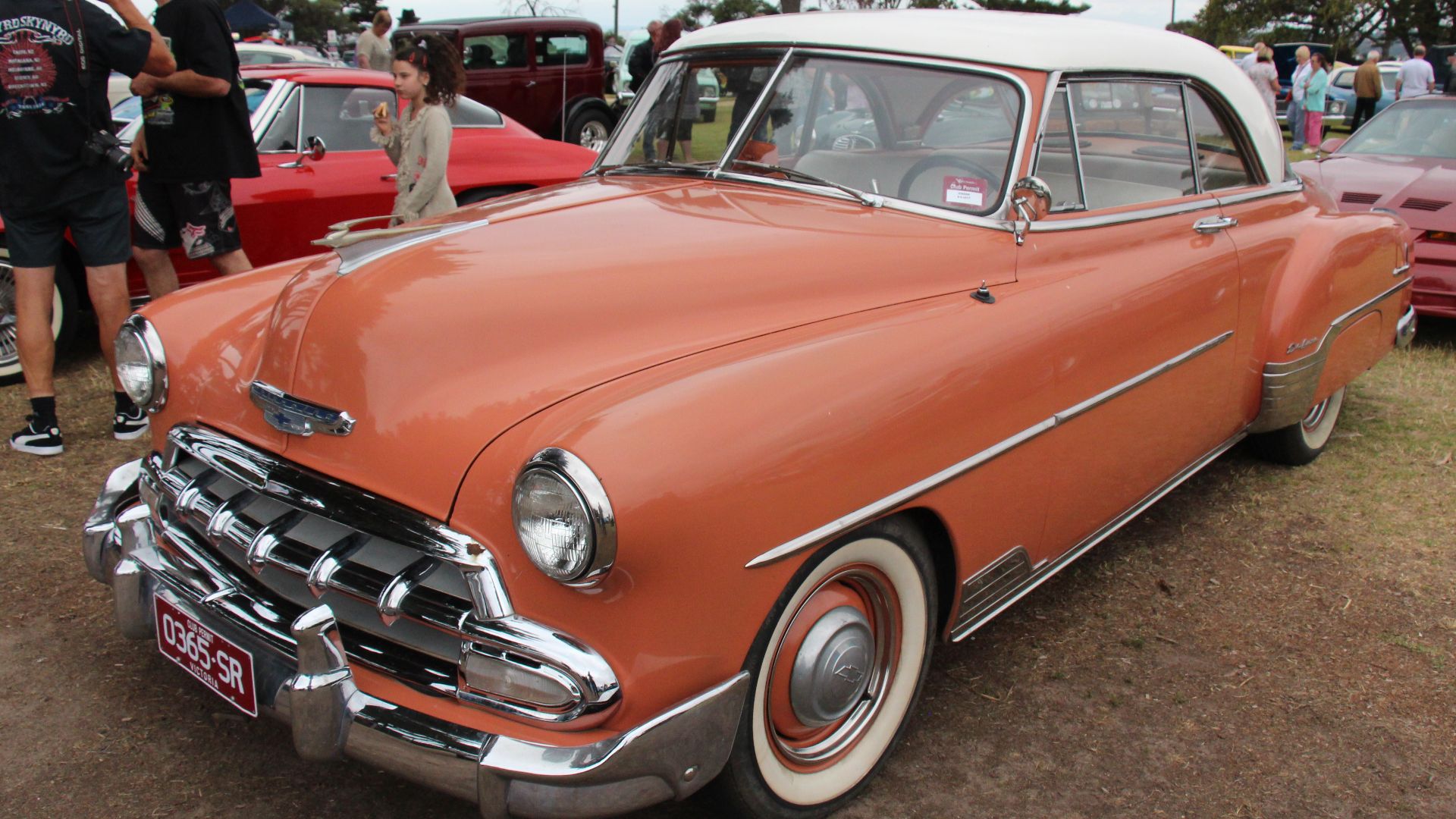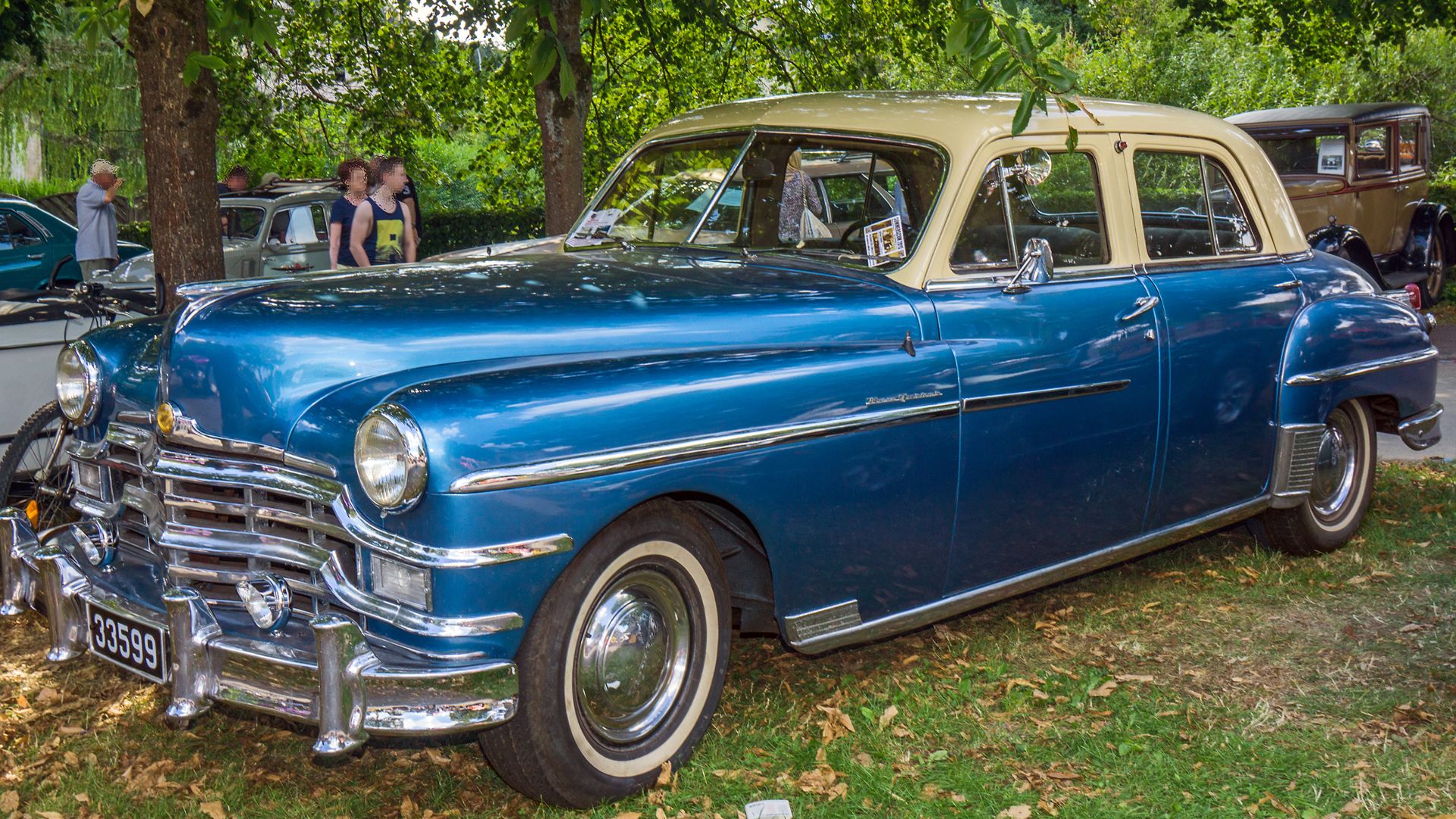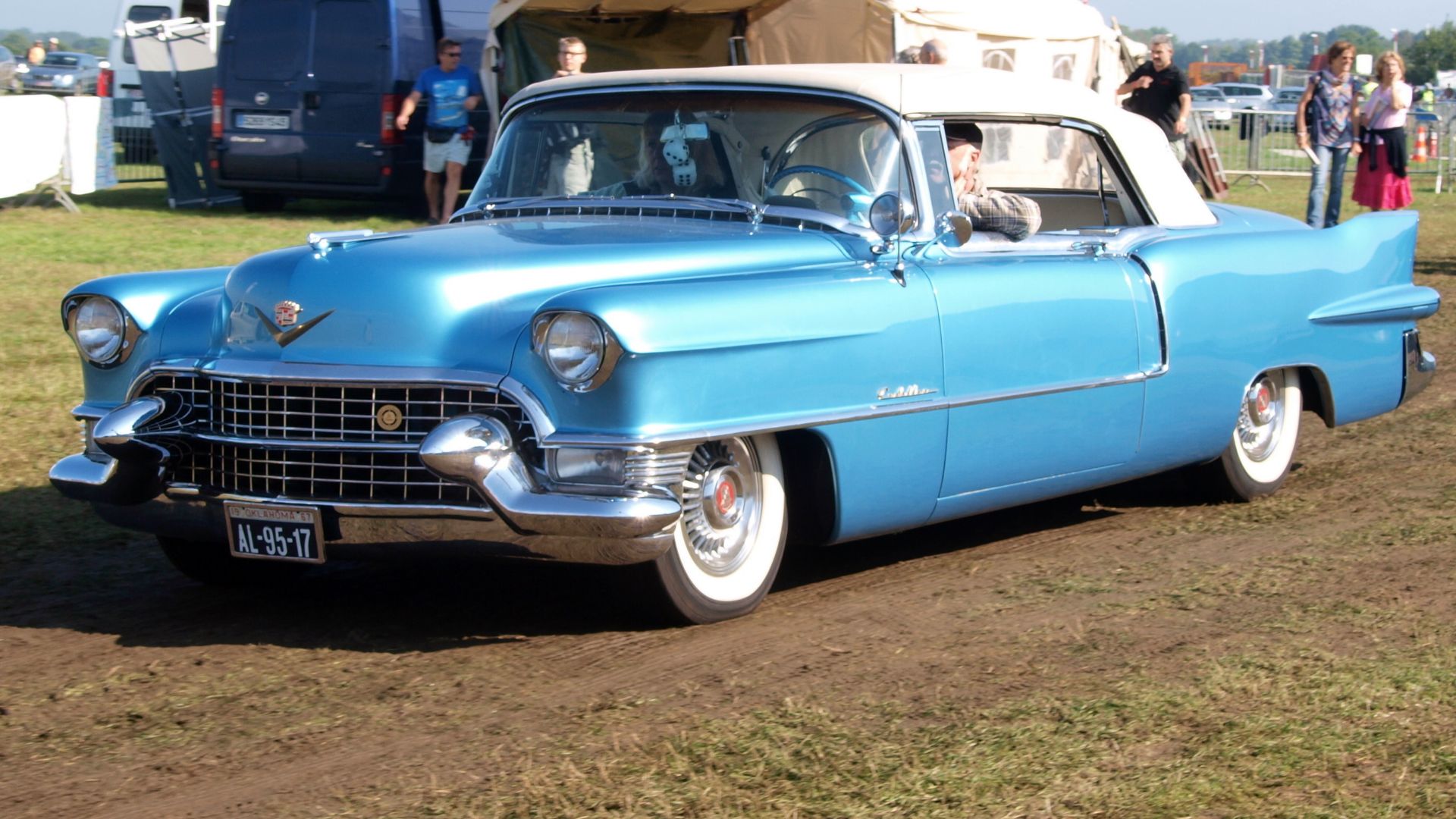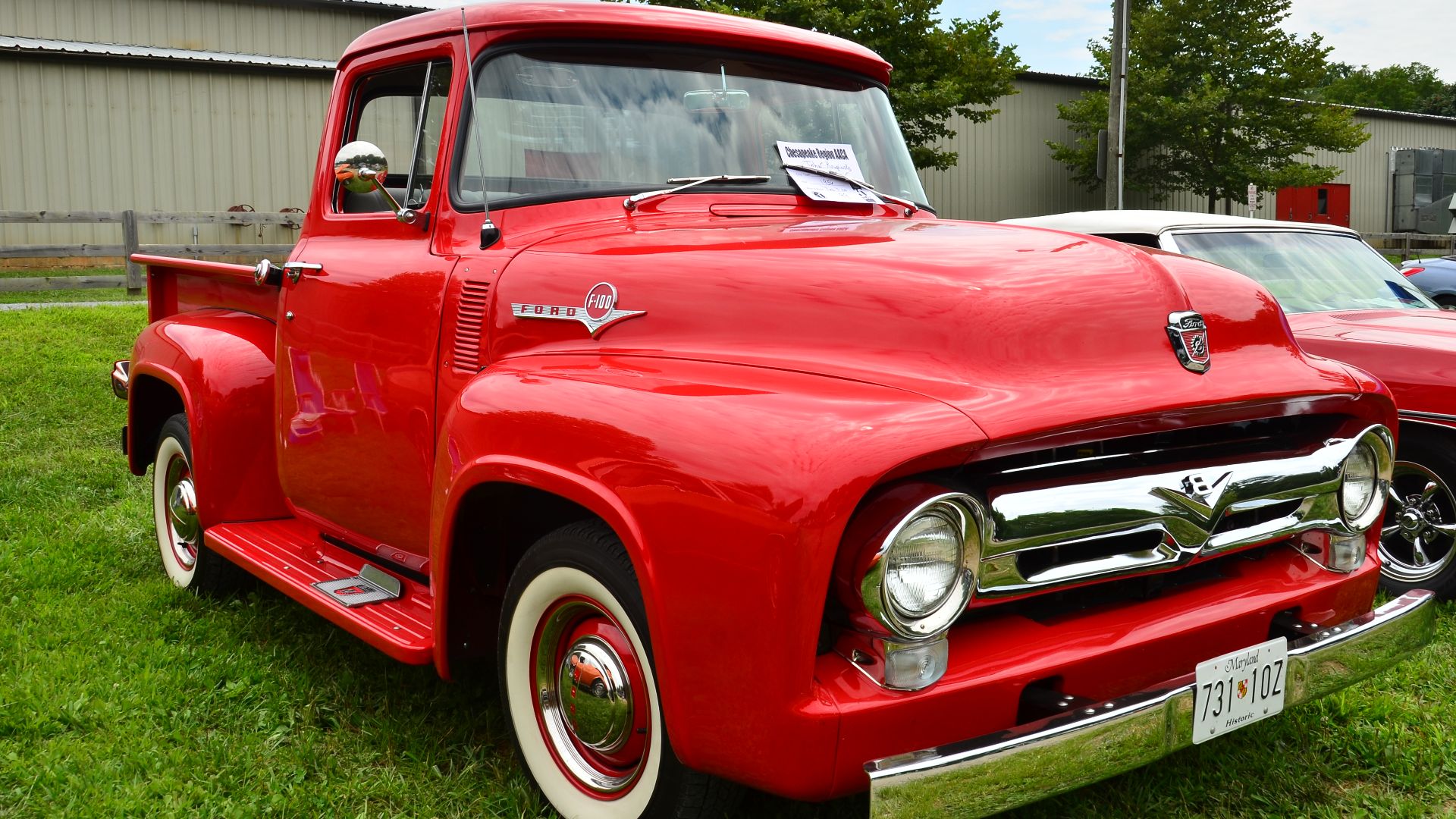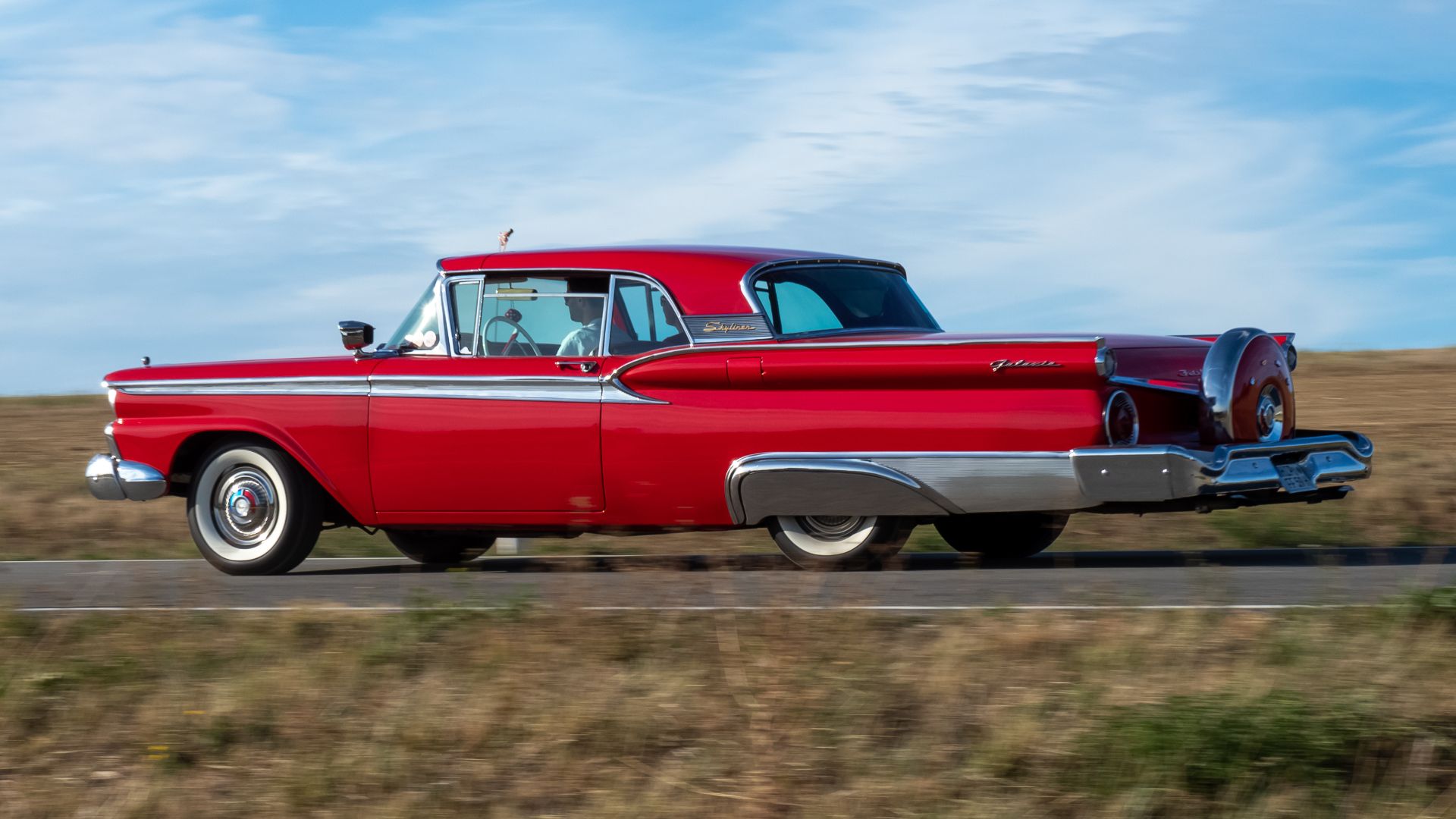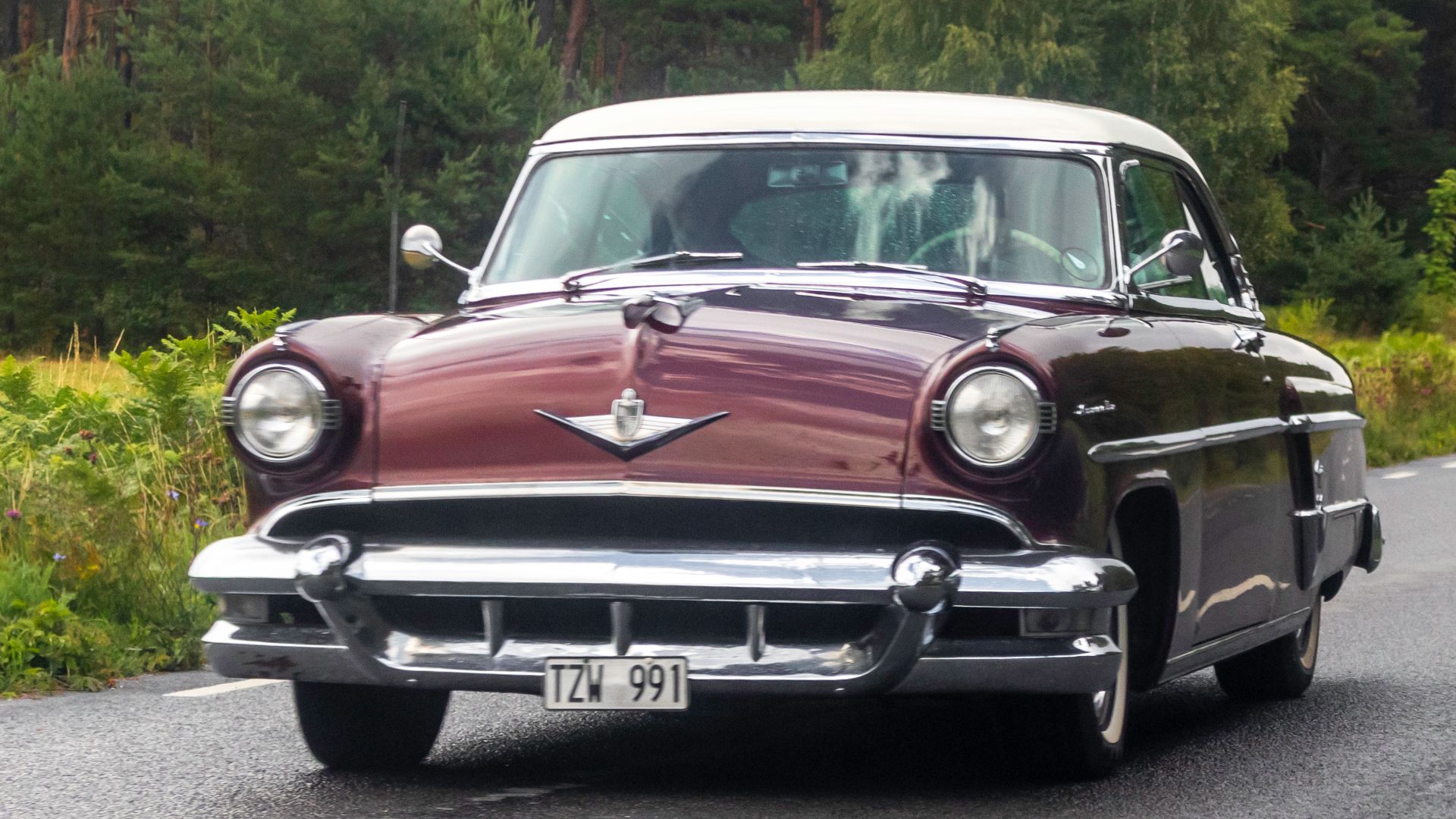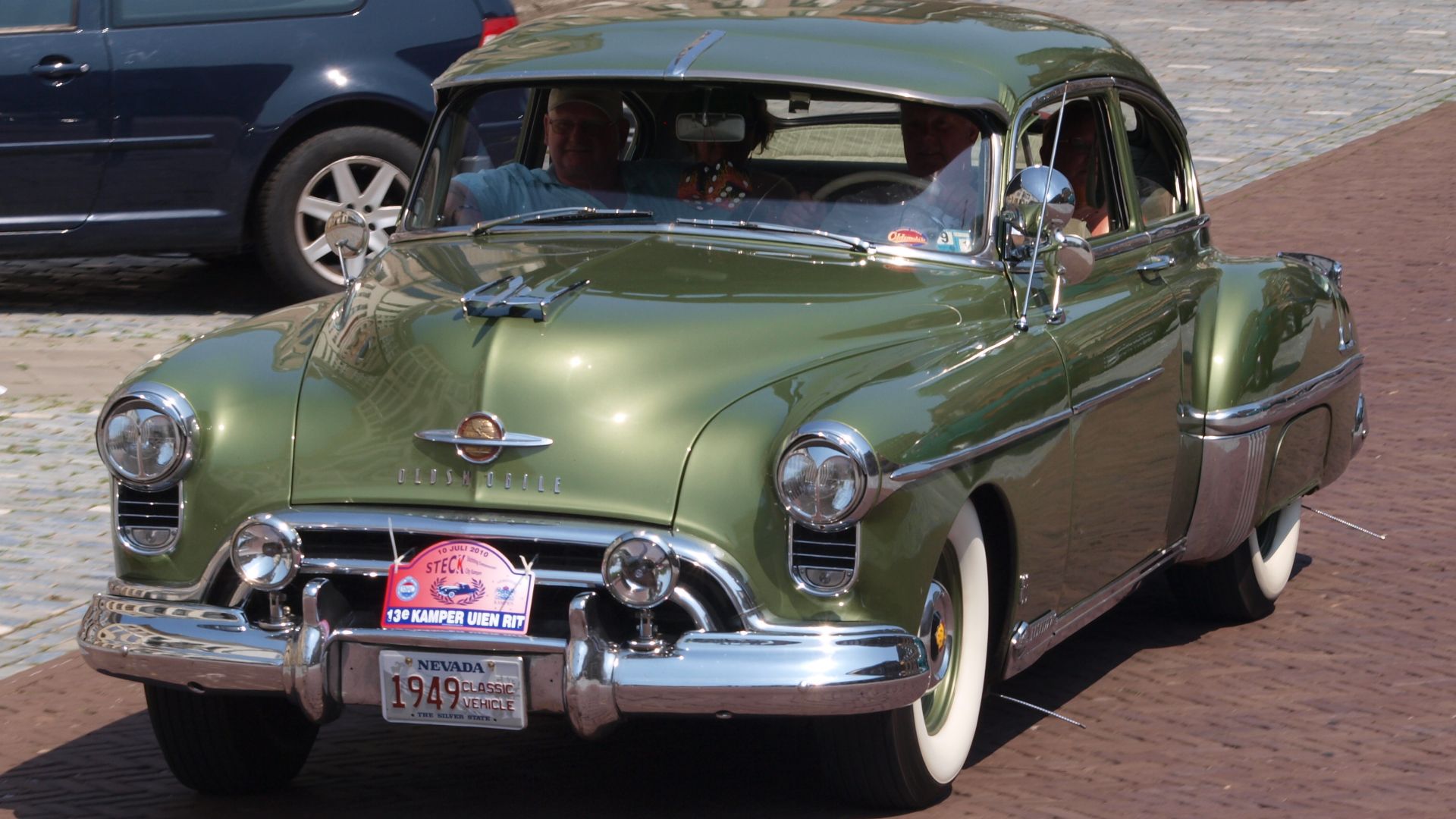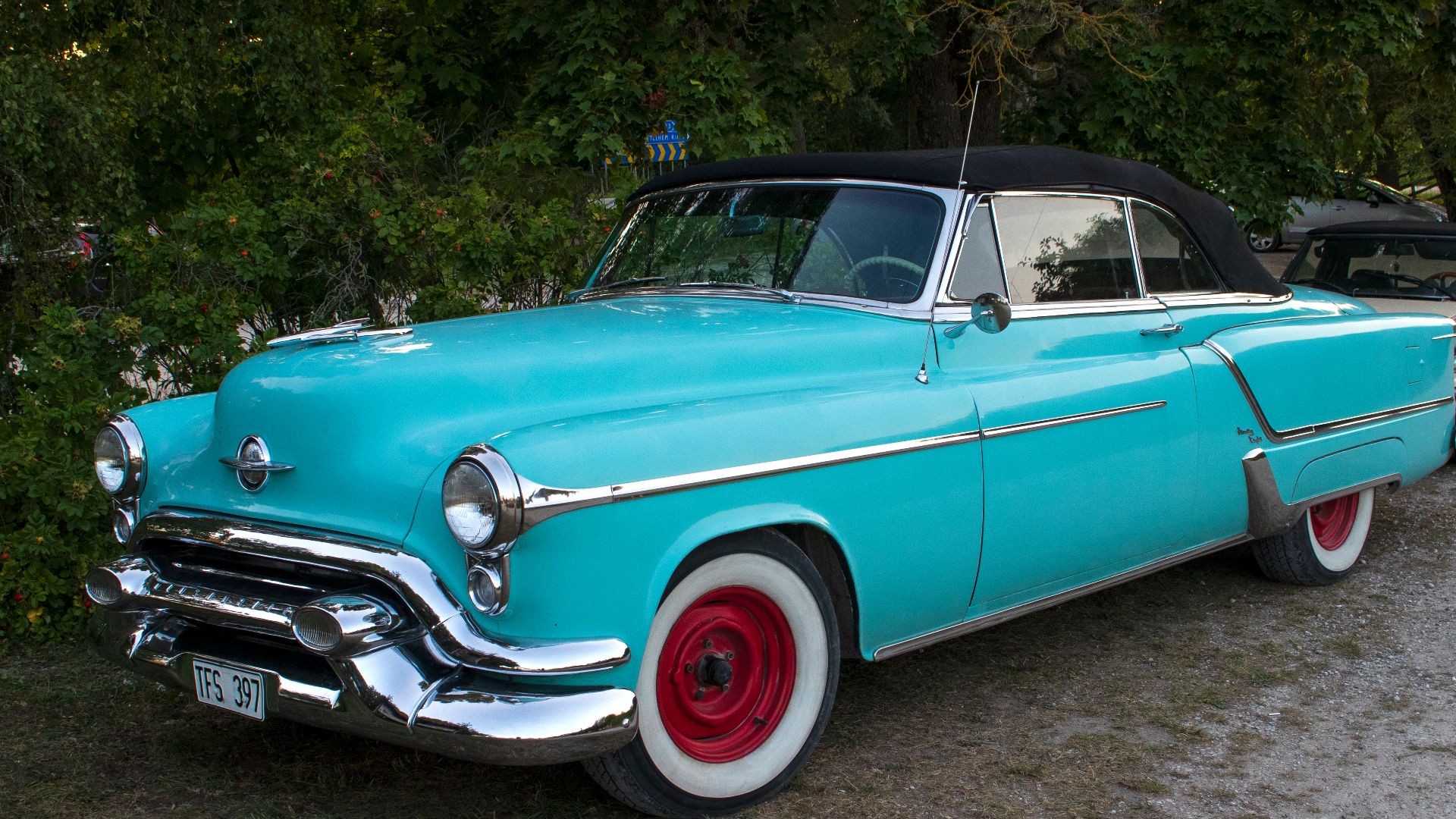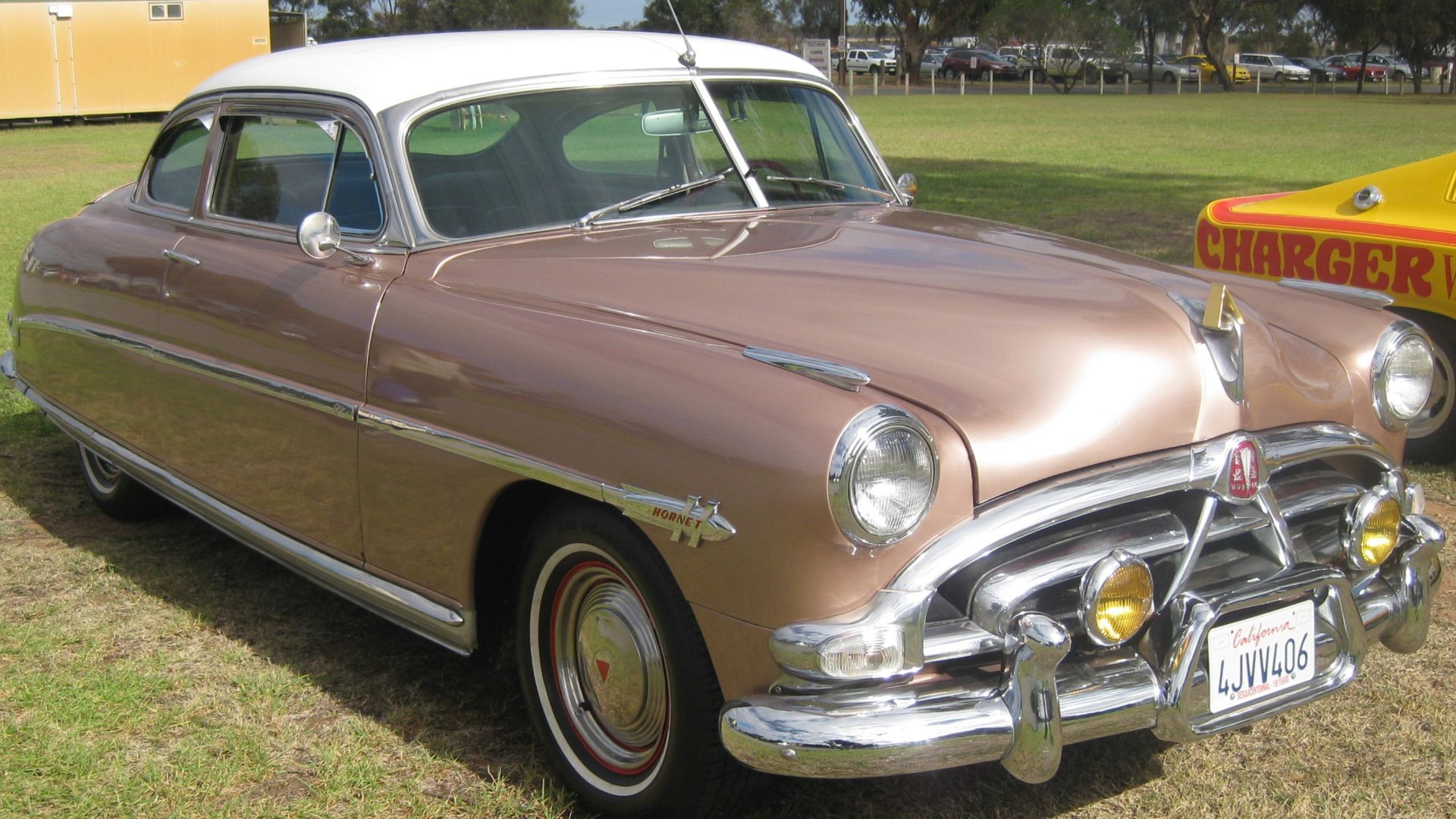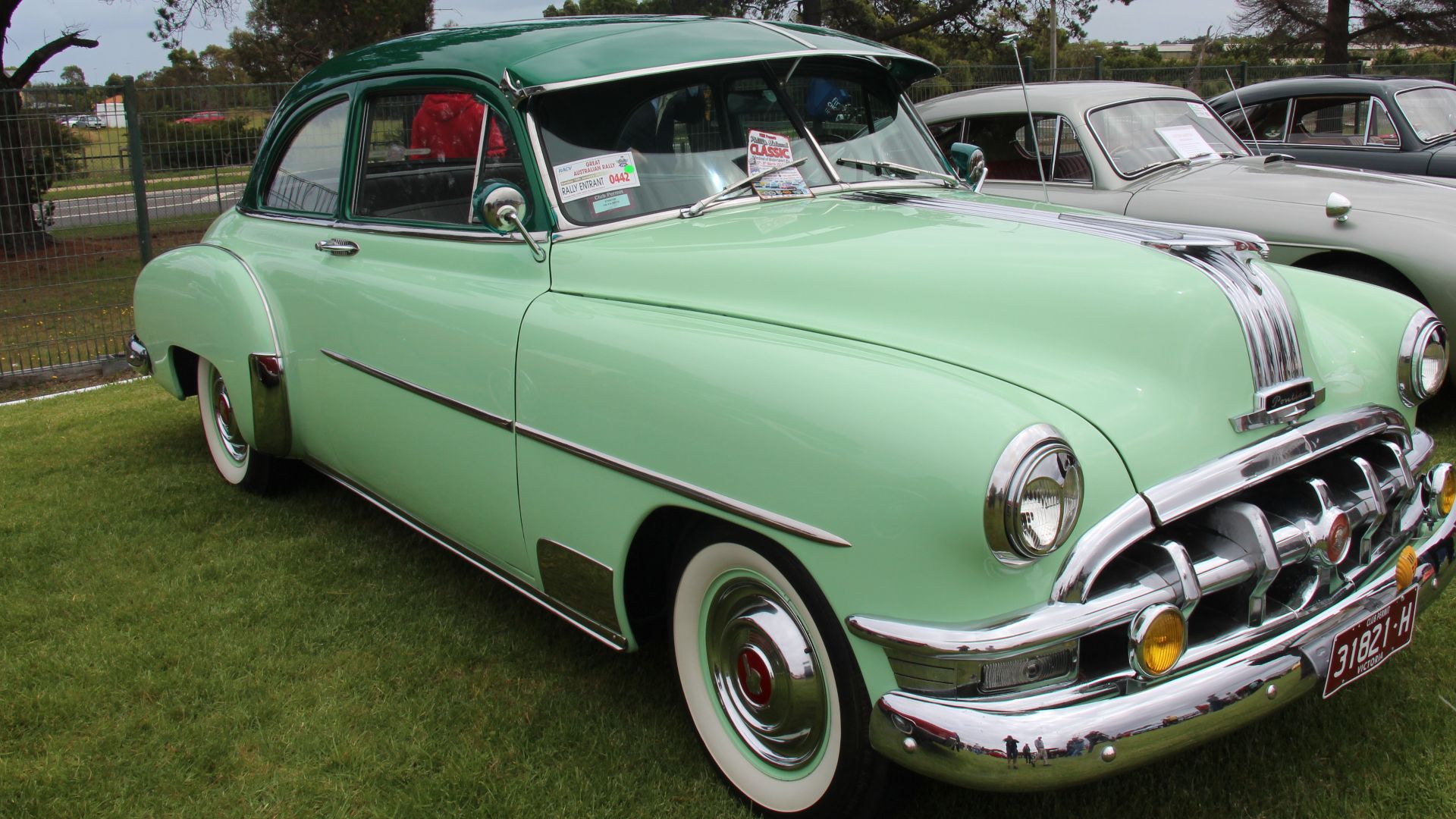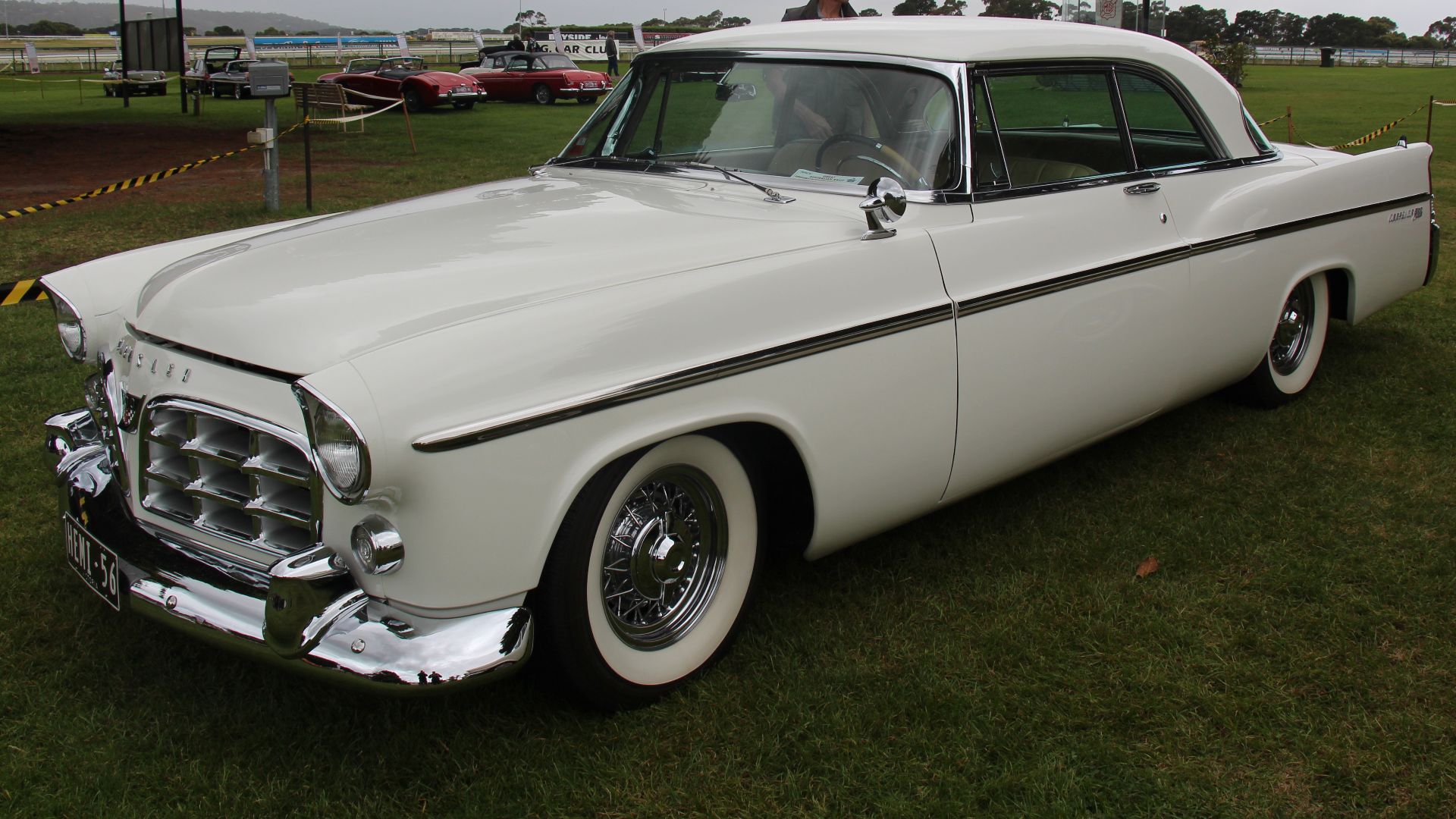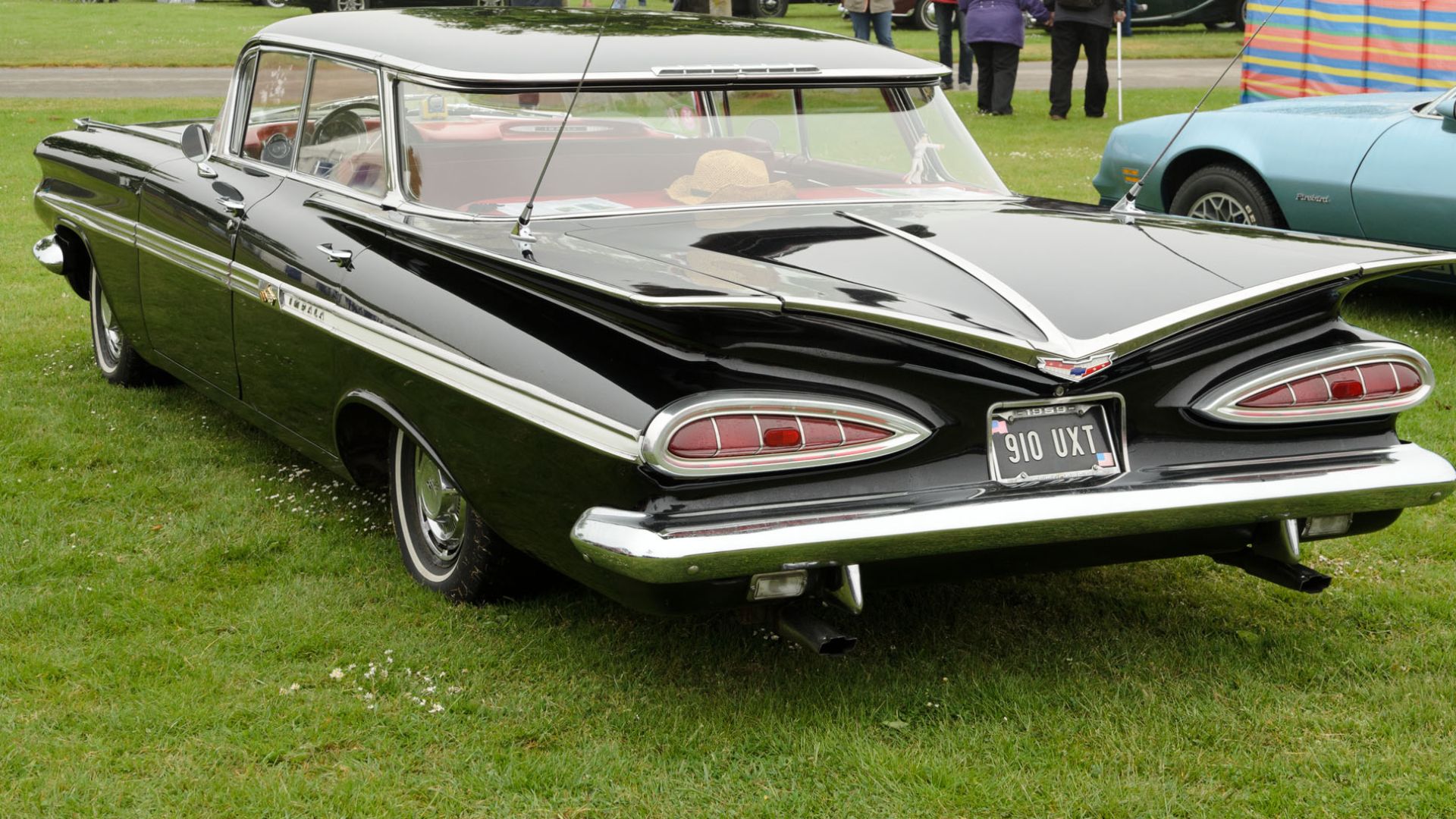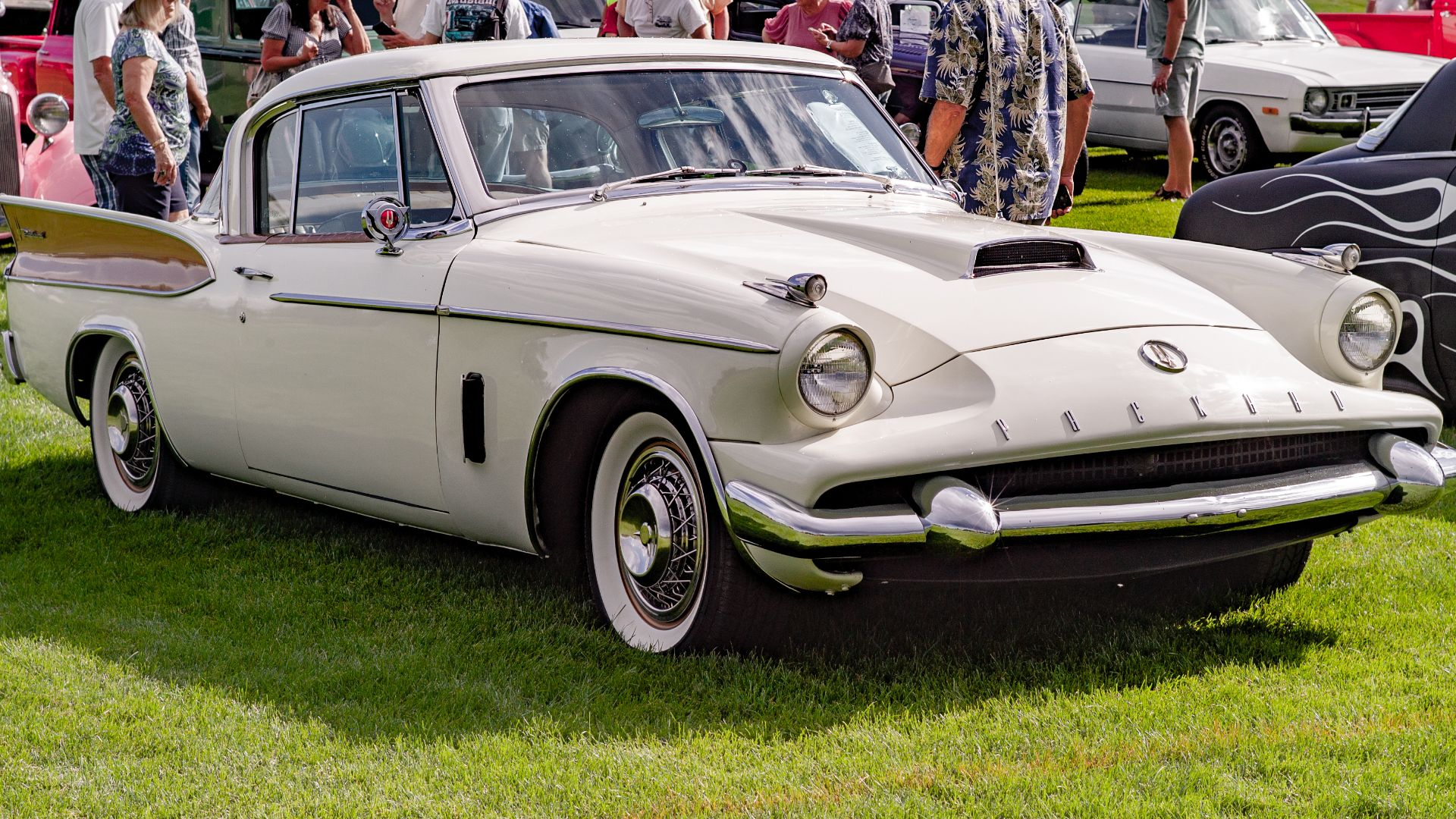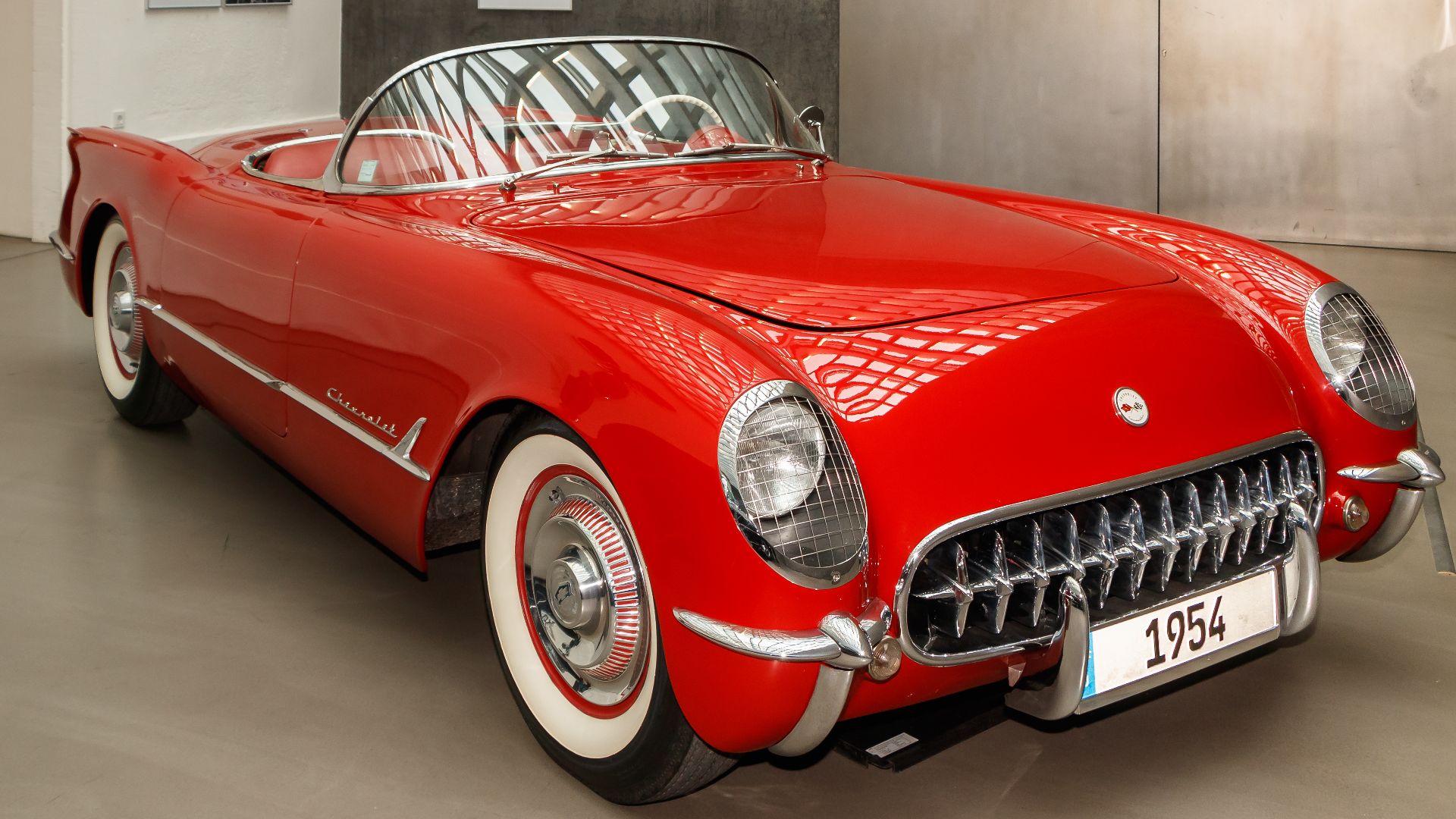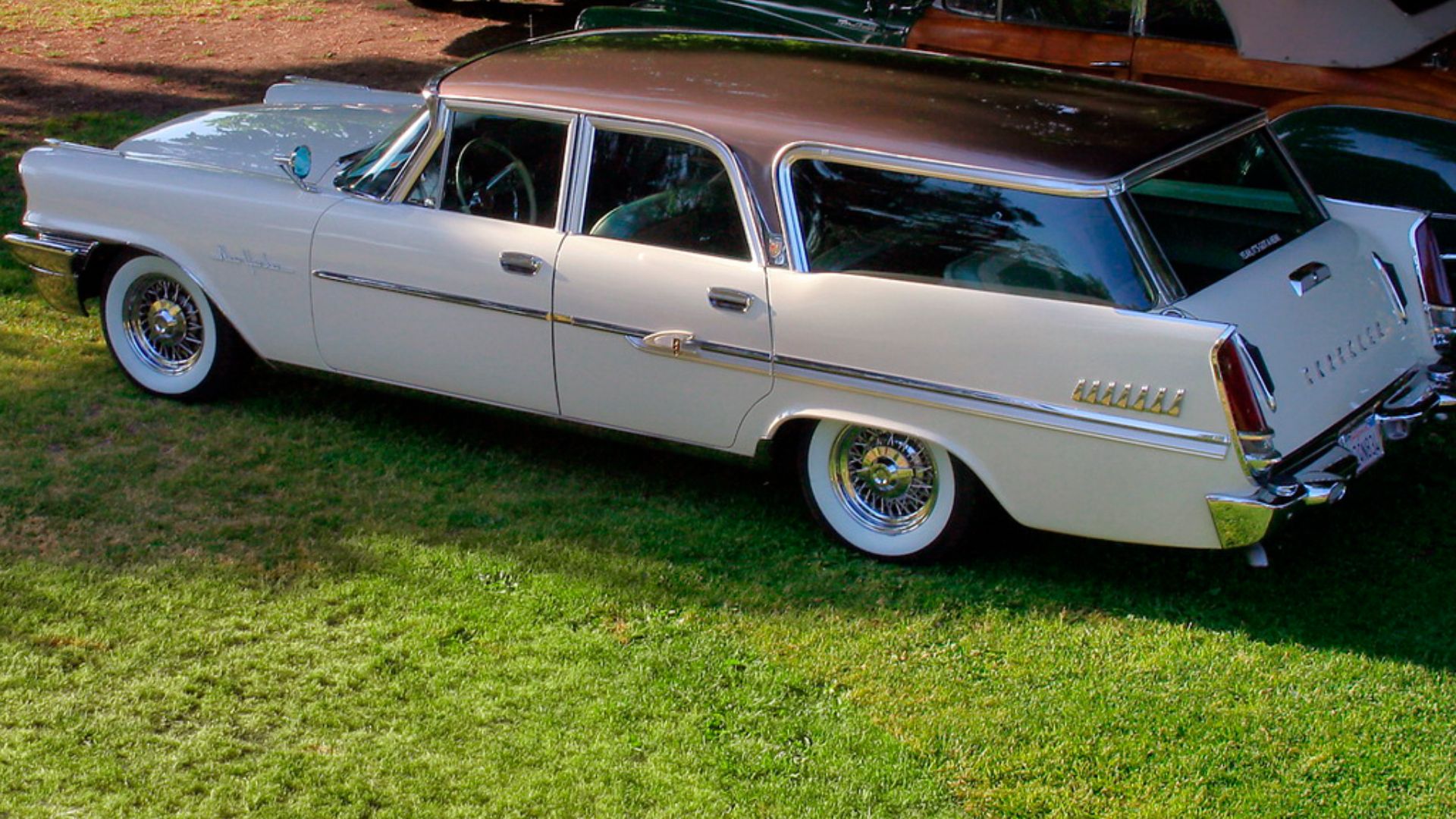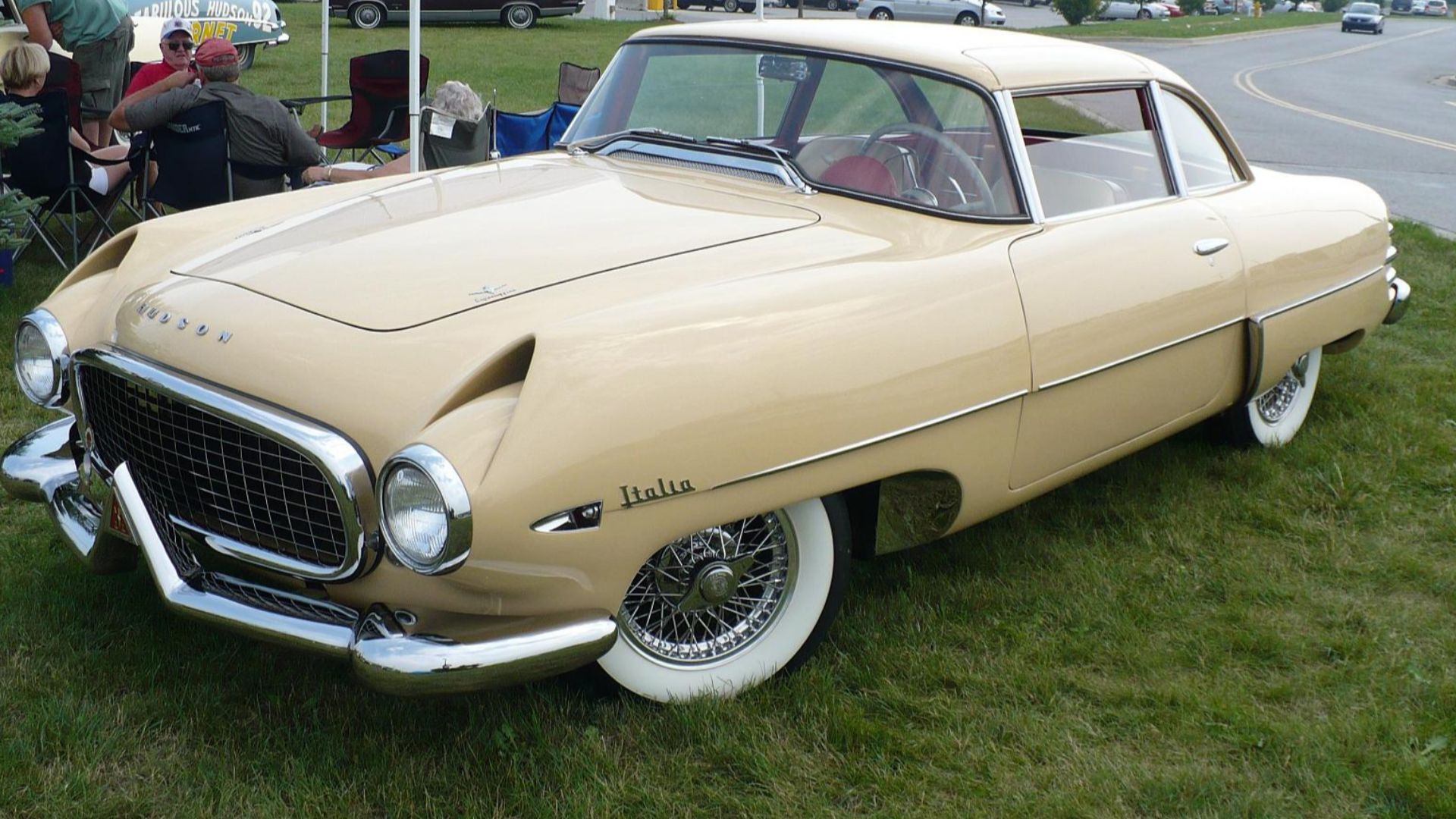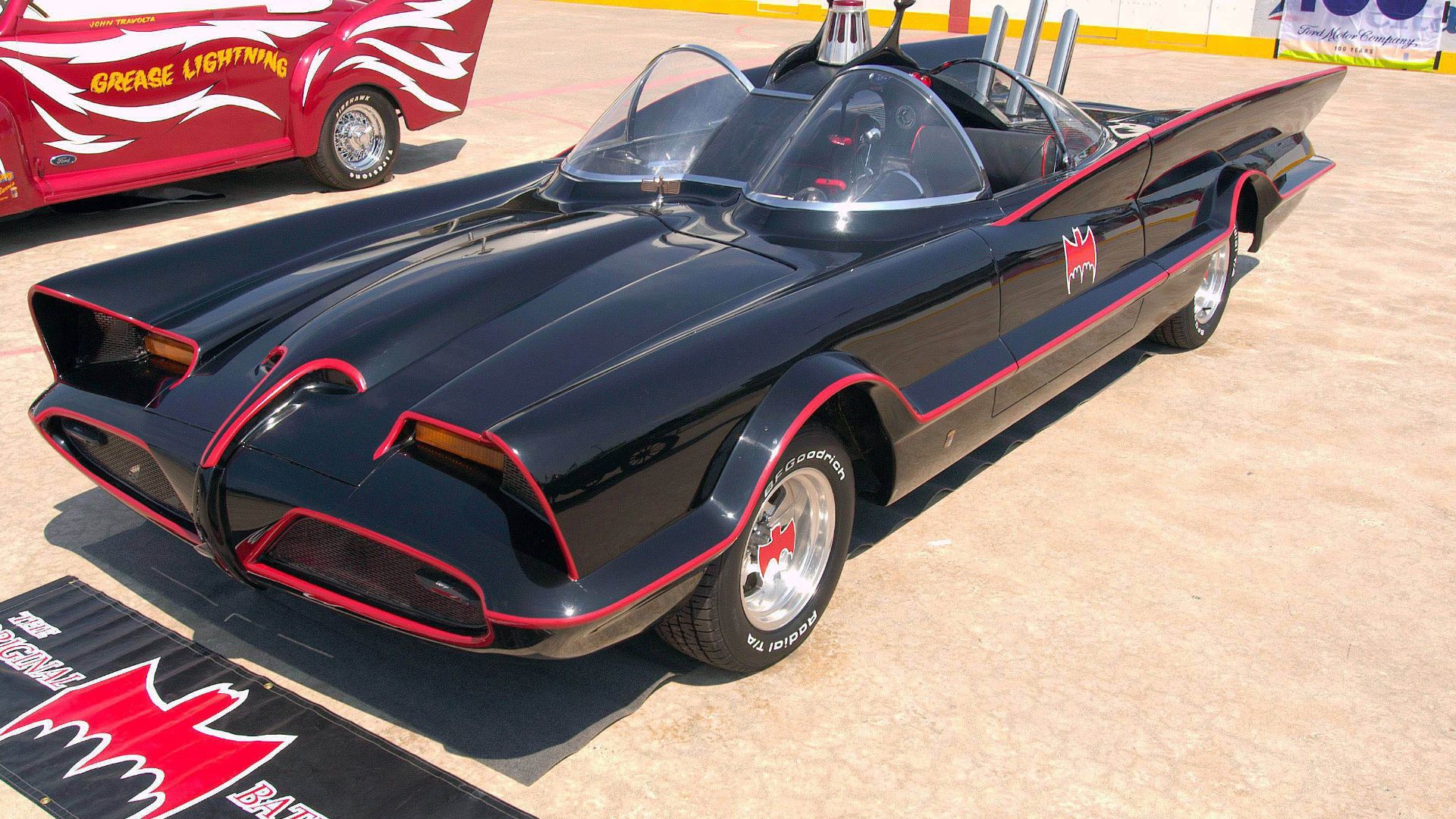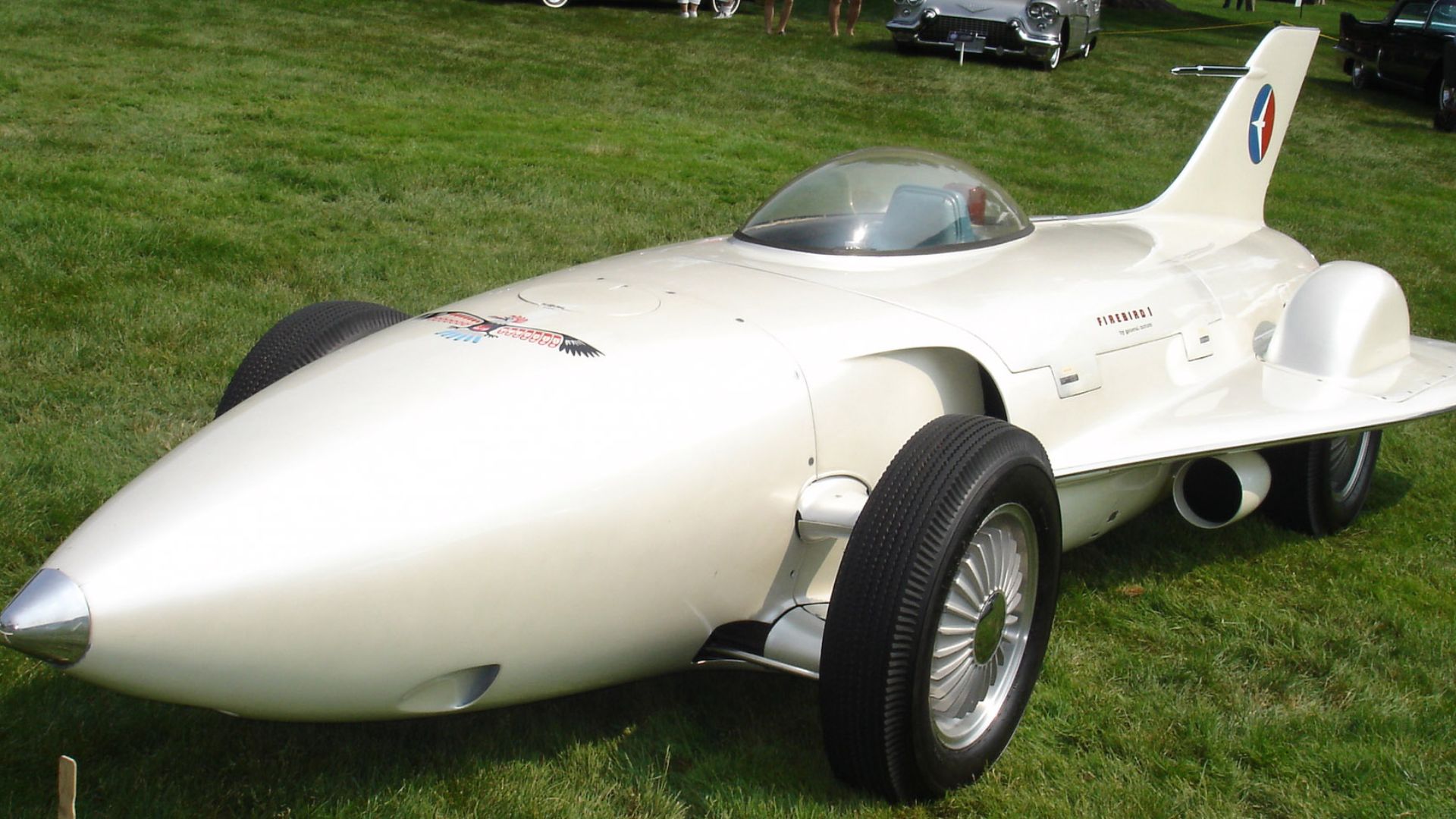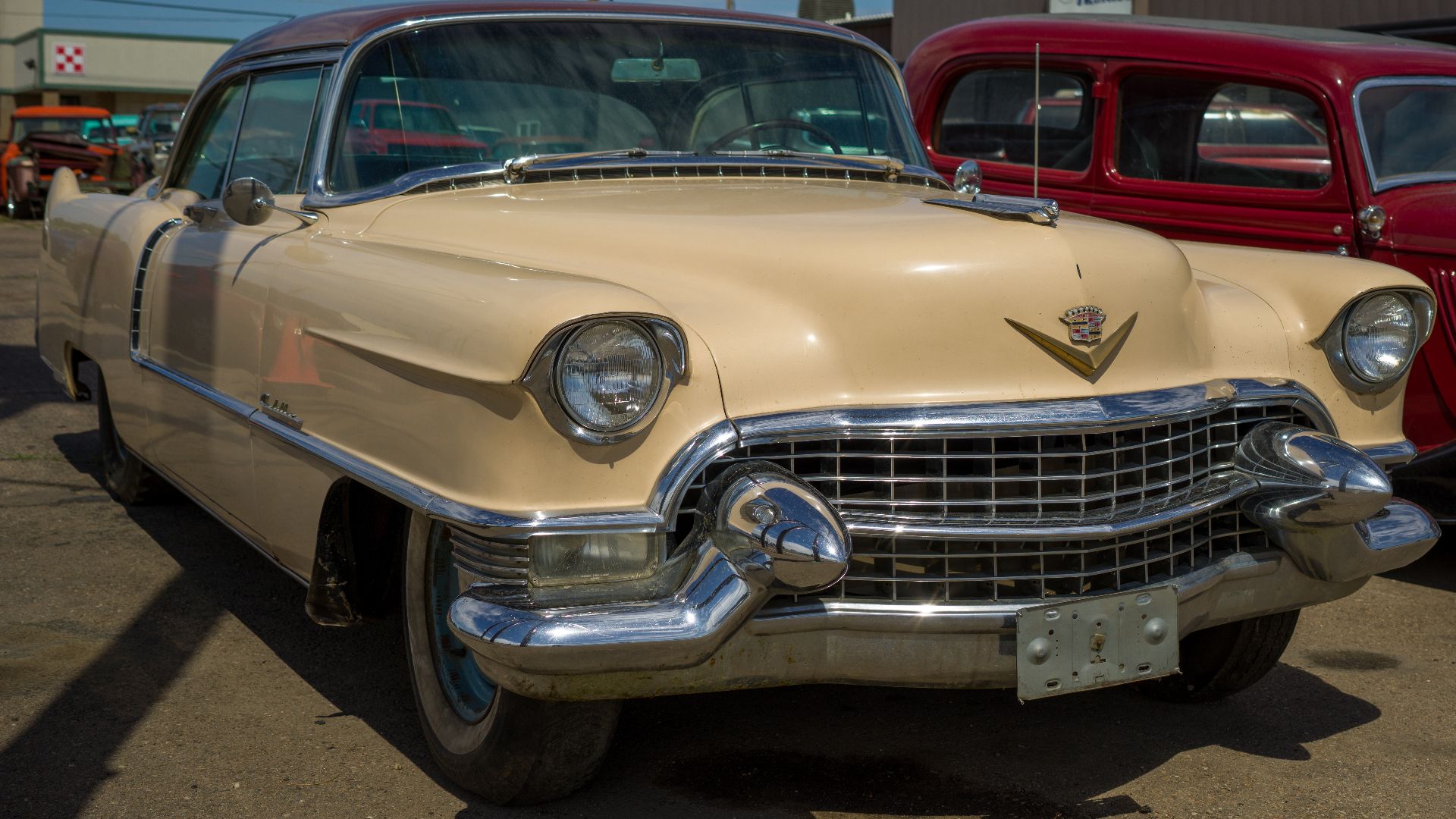If You Fancy Yourself A '50s Hipster, These Were The Best Cars Of That Era
The 1950s were 75 years ago, but these cars carved an enduring legacy as American classics. Whether you favor the Chevrolet Bel Air, the faster Corvette, or the legendary Ford Thunderbird, American cars of the 1950s were a class unto themselves. Let's examine some of the greatest of the 1950s.
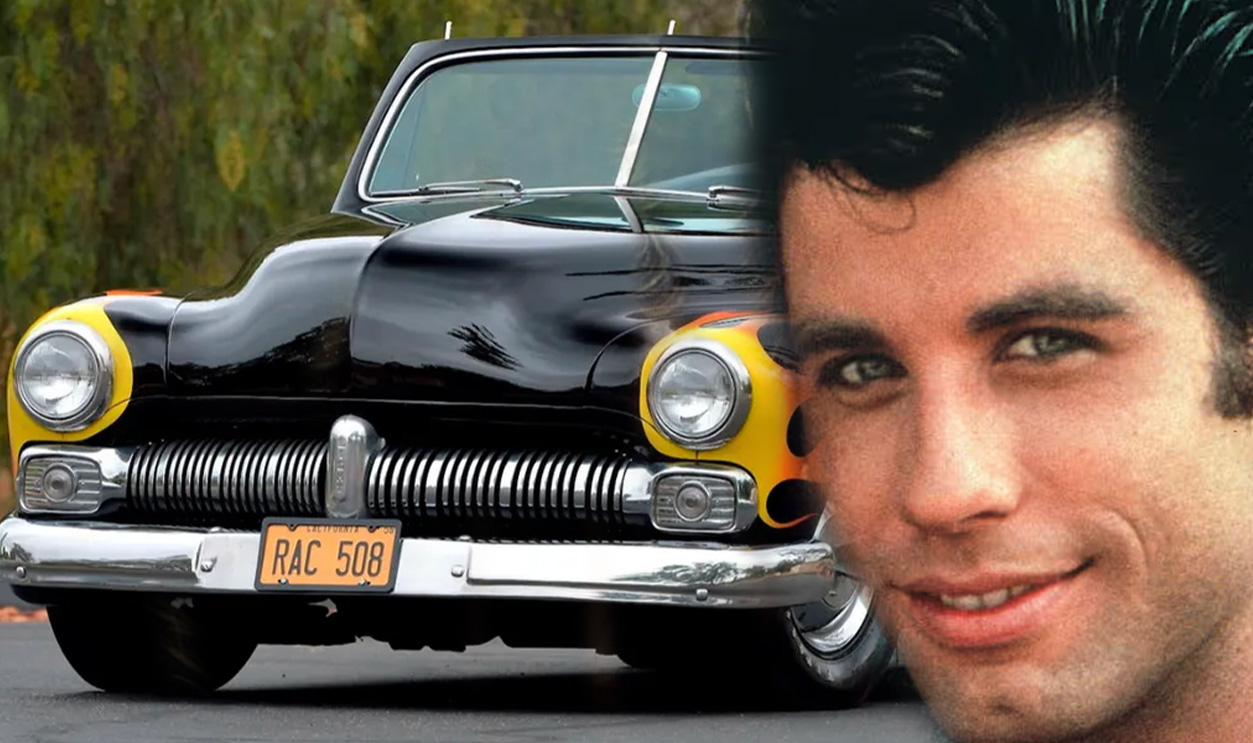
Pontiac Chieftain Catalina
The Pontiac Chieftain Catalina was produced between 1949 and 1958—one of just two designs to come out of the Pontiac plant in the post-war era. The Chieftain Catalina was a coupe design, the first of its kind in this era, powered by a 3.9L six-cylinder engine producing 93 hp. The Catalina was also available with a 3.9L eight-cylinder that produced 106 hp, if you needed more power.
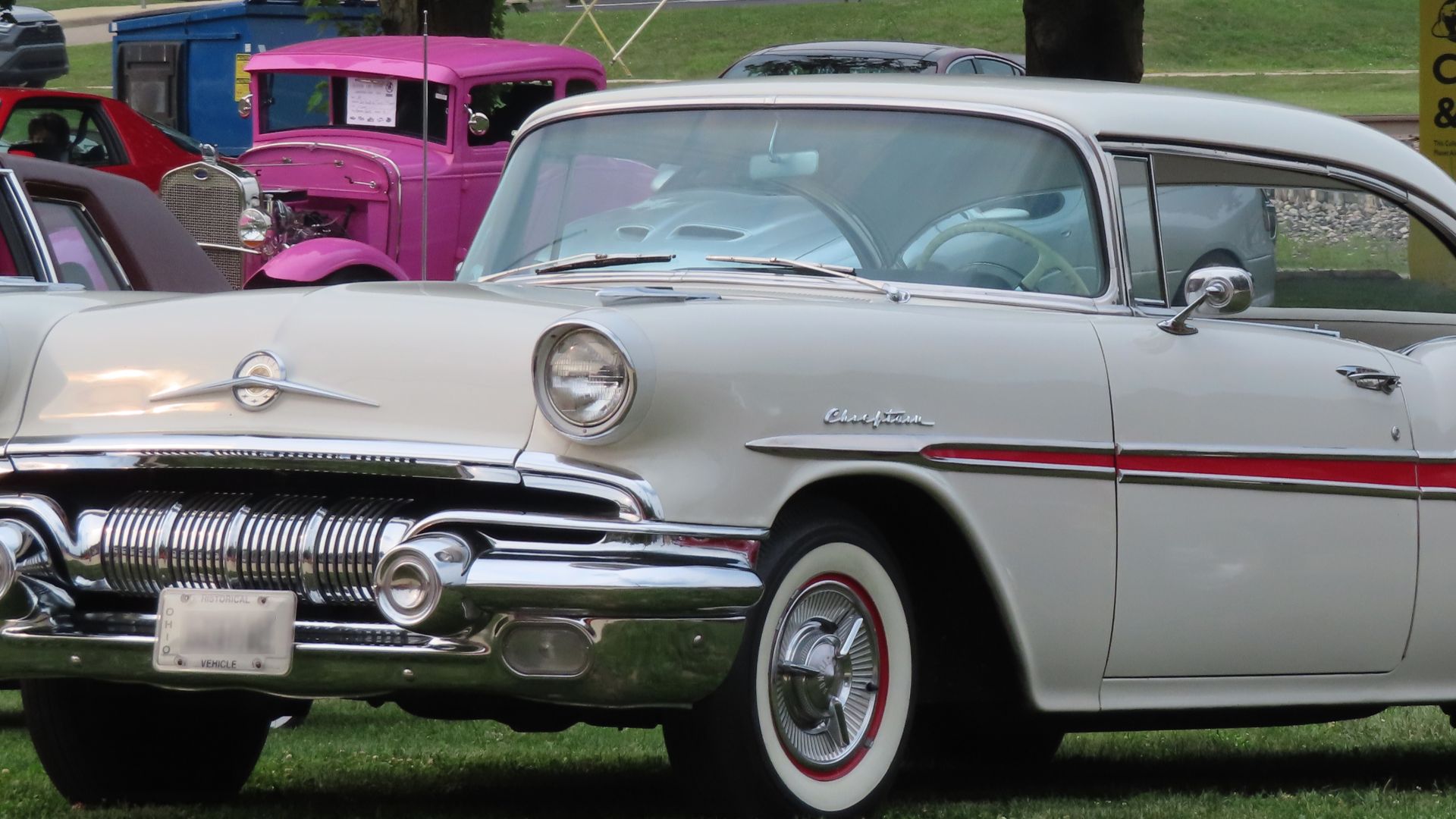 MercurySable99, Wikimedia Commons
MercurySable99, Wikimedia Commons
Buick Century
The Century was one of Buick's best cars in the 1950s. Exuding luxury, comfort, and class, the Century wasn't just luxurious but also quick. The moniker of "Century" came from its ability to maintain a 100-mph speed. This was groundbreaking for the era, quickly making the Century a firm favorite for America's speed demons.
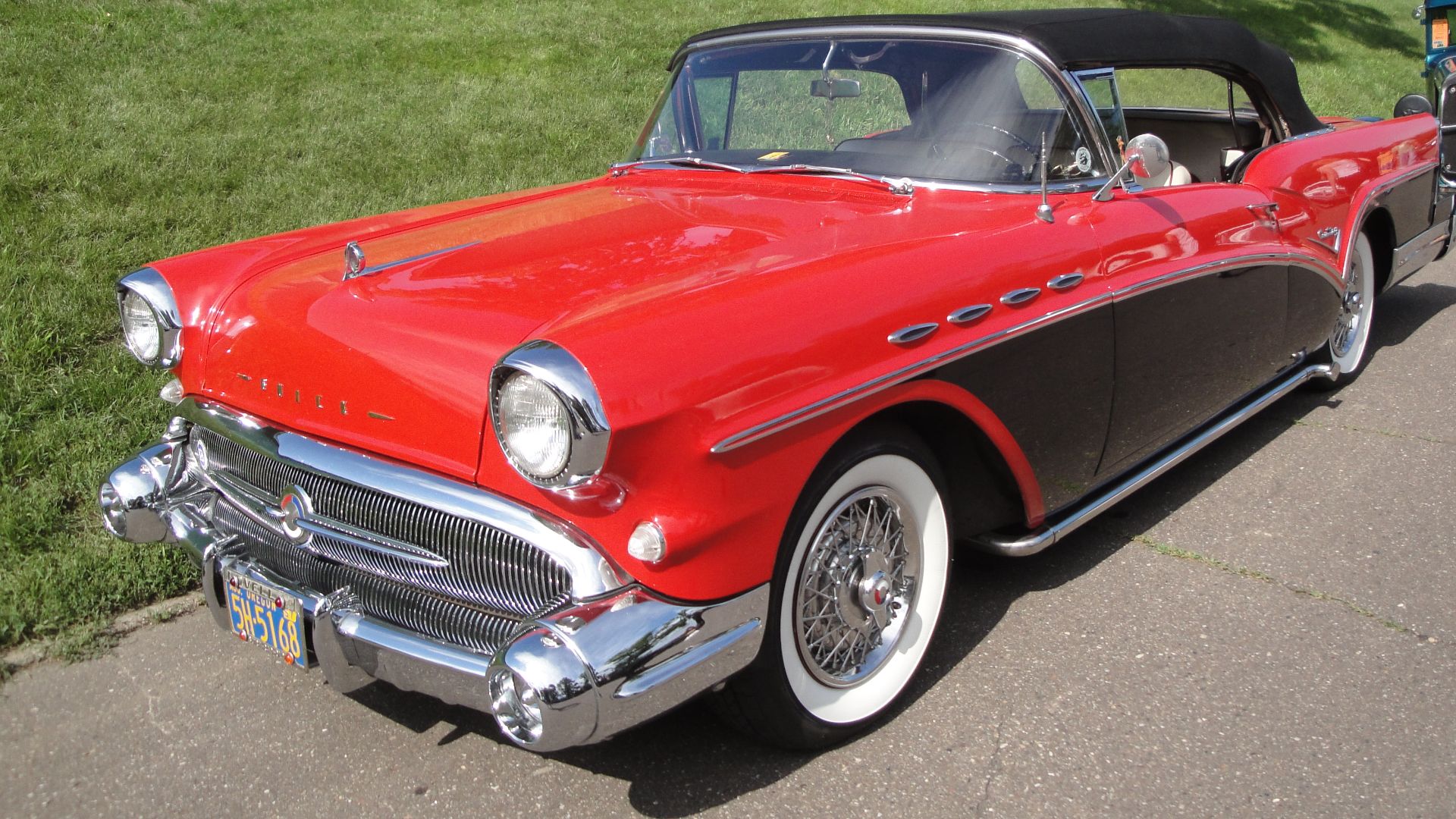 Greg Gjerdingen from Willmar, USA, Wikimedia Commons
Greg Gjerdingen from Willmar, USA, Wikimedia Commons
Ford Thunderbird
The Ford Thunderbird: one of the most iconic cars of the 1950s. Introduced in 1953 to compete with Chevrolet's Corvette C1, the "T-Bird", as it's colloquially known, went from concept to prototype in about a year. It was separated from other Fords of its era by gorgeous tail fins, a large hood scoop, and a speedometer that approached 150 mph.
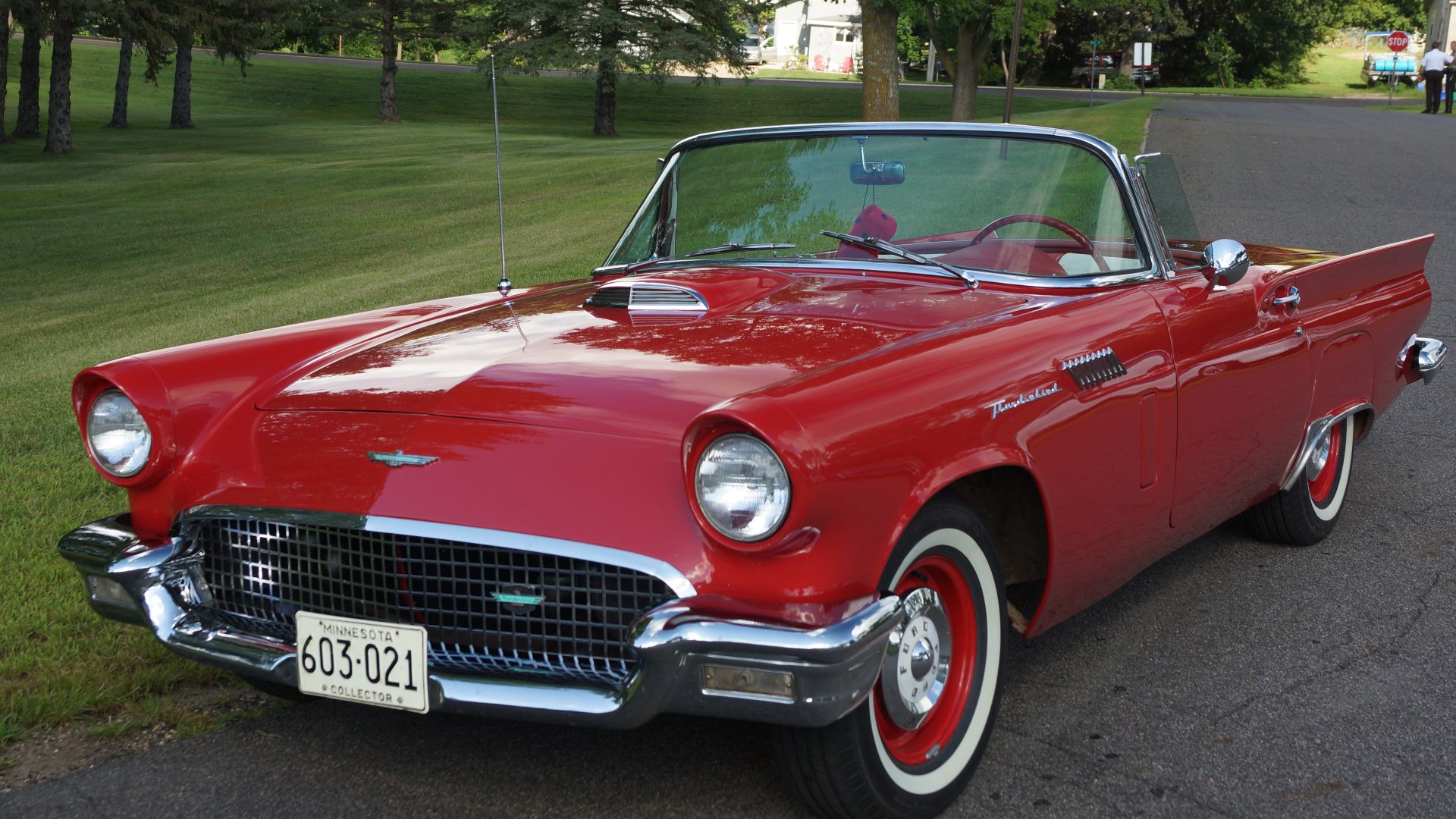 Greg Gjerdingen from Willmar, USA, Wikimedia Commons
Greg Gjerdingen from Willmar, USA, Wikimedia Commons
Chevrolet Bel Air
The Chevrolet Bel Air exemplified the Chevy brand at the beginning of the 1950s—it was big, brash, and came with a large chrome front grille that was all about luxury and finesse. Quite apart from the Chevy Corvette C1, the Bel Air was built for wealthy middle-class Americans, with design inspiration taken from Ferrari.
Dodge Custom Royal
What do you get when you mix V8 power, a massive engine (8.1L) capable of producing 295 hp, and the extreme end of Dodge's idea of opulence? You get the flagship Dodge Custom Royal. Produced between 1955 and 1959, the Custom Royal featured a dual exhaust, powered swiveling bucket seats, air conditioning, and even an electric clock.
 Greg Gjerdingen from Willmar, USA, Wikimedia Commons
Greg Gjerdingen from Willmar, USA, Wikimedia Commons
Chrysler New Yorker
The New Yorker was a gamble that paid off for Chrysler. Despite first being released in 1938, the New Yorker really came into its own as a luxury car in 1949 for the seven-year run of production till 1958. It used the new pontoon-style body that had been adopted by Chrysler after World War II. A longer (131.5-inch) wheelbase and increased safety features (like a padded dashboard) made drivers safer. It needed the safety mechanisms, as a 180 hp V8 engine was introduced in 1950.
Cadillac Eldorado
Whitewall tires, chrome on every surface that would take it (like aluminum was free), pointed fins, and the classic wide-V on the hood. The Eldorado was introduced in 1952 with a 5.4L V8 engine with a four-speed Hydramatic transmission (the first mass-produced automatic transmission for cars). Years later, Elvis Presley would have a guitar-shaped Eldorado custom-made for him and painted hot pink.
Ford F100
The Ford F100 was introduced to the world in 1950 and revolutionized vehicle use in the United States. The F100 was the first true pickup truck. With horizontal chrome bars, flared wheel arches, and a squared-off body, the F100 was an instant classic, used by Americans from all walks of life.
Ford Fairlane 500
Named after Henry Ford's "Fairlane" estate, the Fairlane 500 was crafted in both two- and four-door models, with convertible and hardtop versions. The Fairlane was targeted toward the middle-class and seen as a middle-of-the-road option for Ford fans.
Lincoln Capri
Before Lincoln was bought out by Ford, they built the Lincoln Capri. Positioned in the market above the Lincoln Cosmopolitan, the Capri was distinguished by its beautiful rear flanges and a new engine: the Lincoln 90-degree V8 that produced 160 hp. It was also the first car to offer an automatic headlight dimmer. The Capri was named after the eponymous Italian island in the Gulf of Naples.
Oldsmobile 88
Introduced in 1949, the Oldsmobile 88 had an interesting hood design, namely a longer hood that came out over the top of the windshield. It featured an inline-six V8 engine that produced 135 hp, combining its lightweight body design with huge power. Some consider the 88 to be the first muscle car produced. The Oldsmobile 88 was the most popular-selling Oldsmobile of the era.
Oldsmobile 98
The 88 was followed by the Oldsmobile 98 in 1952, which exuded opulence. It featured chrome gravel guards, grey rubber floor mats, and carpet in the front and rear. It also had foam rubber seating, turn signals, and even windshield washer.
Hudson Hornet
The Hudson Hornet became an all-American classic due to its stock racing pedigree. The Hudson Hornet was produced between 1951 and 1954, featuring a step-down design that helped the car's lower center of gravity. Interestingly, the Hornet featured Twin-H Power engines that were famously bulletproof that produced 145 hp. The Hudson Hornet became a NASCAR staple, dominating the stock racing scene throughout the 50s.
Ford Ranchero
The Ford Ranchero was one of the more unique vehicles of the 1950s, as it was half-car, half-truck, known as the coupe-utility. It had a small bed in the back and sold well enough upon its release in 1957 to spawn the Chevrolet El Camino. The Ranchero filled an untapped market, and the rest is automotive history.
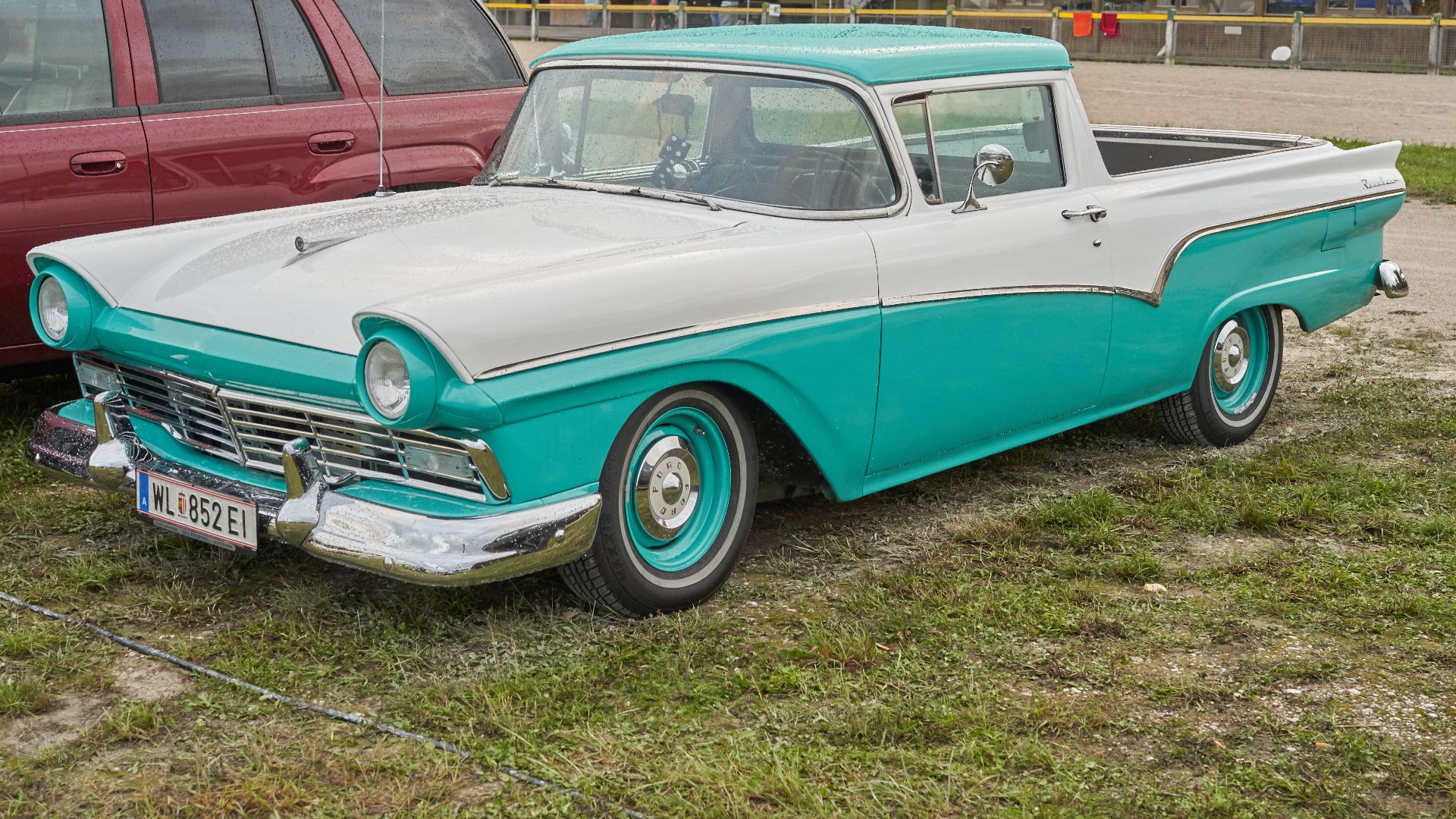 Tobias ToMar Maier, Wikimedia Commons
Tobias ToMar Maier, Wikimedia Commons
Packard Caribbean
Despite being produced for just three years between 1953 and 1956, the Packard Caribbean took the American automotive market by storm. It had unique features, like a chrome band that ran the entire length of the car, a rear-wheel cutout, along with concealed door handles. The Caribbean's 6.1L OHV V8 engine could produce 310 hp and had a top speed of over 100 mph.
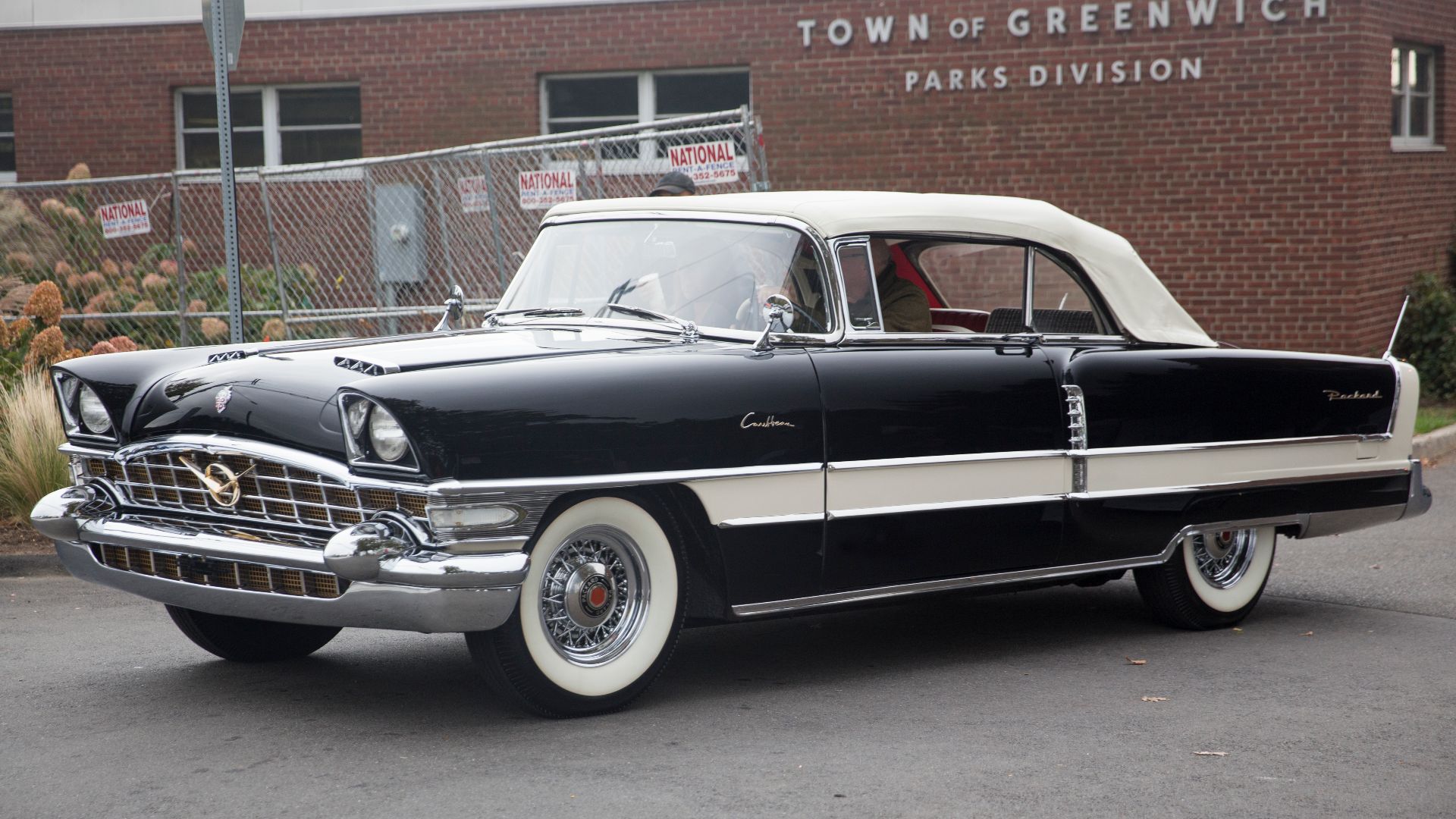 Mr.choppers, Wikimedia Commons
Mr.choppers, Wikimedia Commons
Mercury Montclair
Ford's Mercury division was doing big things in the 1950s. Among them was the upper-class Montclair, a two- or four-door hardtop sedan that was one of Mercury's most successful luxury cars. It boasted a 4.8L V8 engine adopted from the Ford Thunderbird, producing 195 hp. Over 71,000 Montclairs sold in the first year of their release.
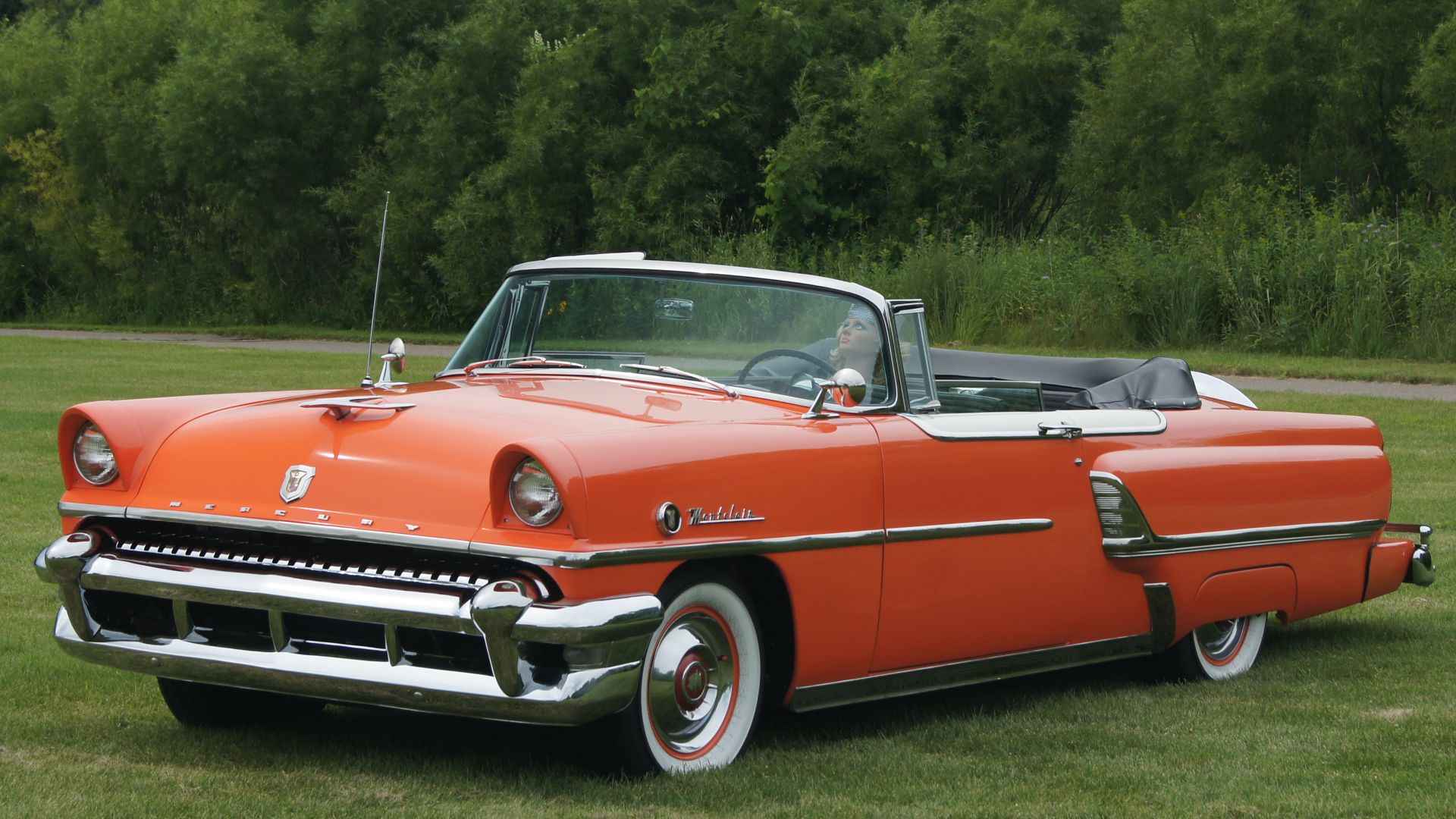 Greg Gjerdingen from Willmar, USA, Wikimedia Commons
Greg Gjerdingen from Willmar, USA, Wikimedia Commons
Nash Metropolitan
Nash might not be one of the best-known American brands, but their Metropolitan was among the first "subcompact" and "economy" offerings in a world full of expensive Fords and Chevys. Emerging from a merger between Nash and Hudson to form the American Motor Company (inventors of the famous Gremlin), the Metropolitan was renowned for being a good-looking car that was fun to drive.
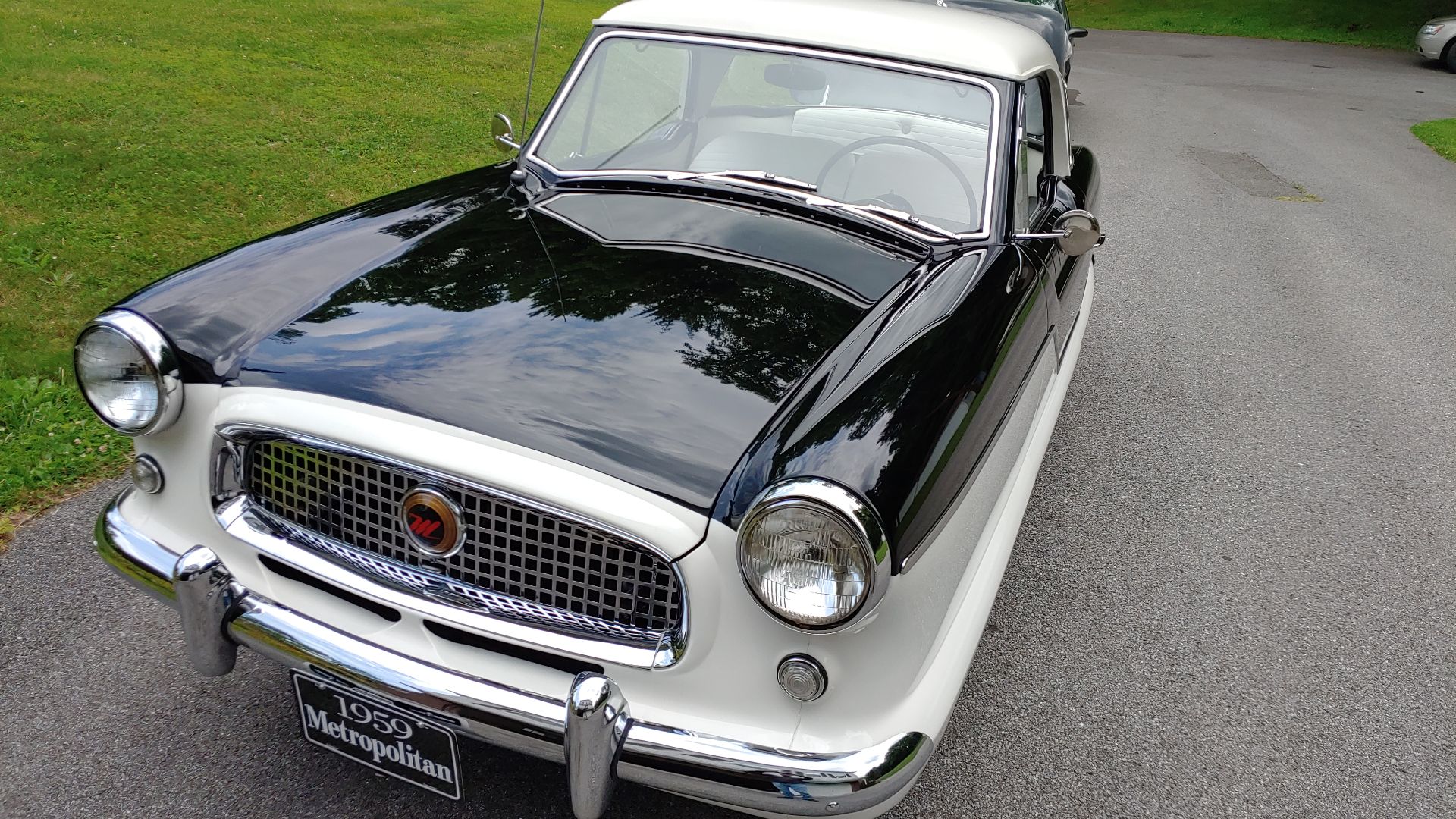 sbennett1298, Wikimedia Commons
sbennett1298, Wikimedia Commons
Plymouth Fury
A gorgeous amalgamation of gold and white, the Plymouth Fury was first introduced in 1956 as a hardtop with gold trim and sandstone white paint (its only offering). Spurred on by two four-barrel carburetors, the Fury certainly lived up to its name: producing 290 hp from a 5.2L V8 engine.
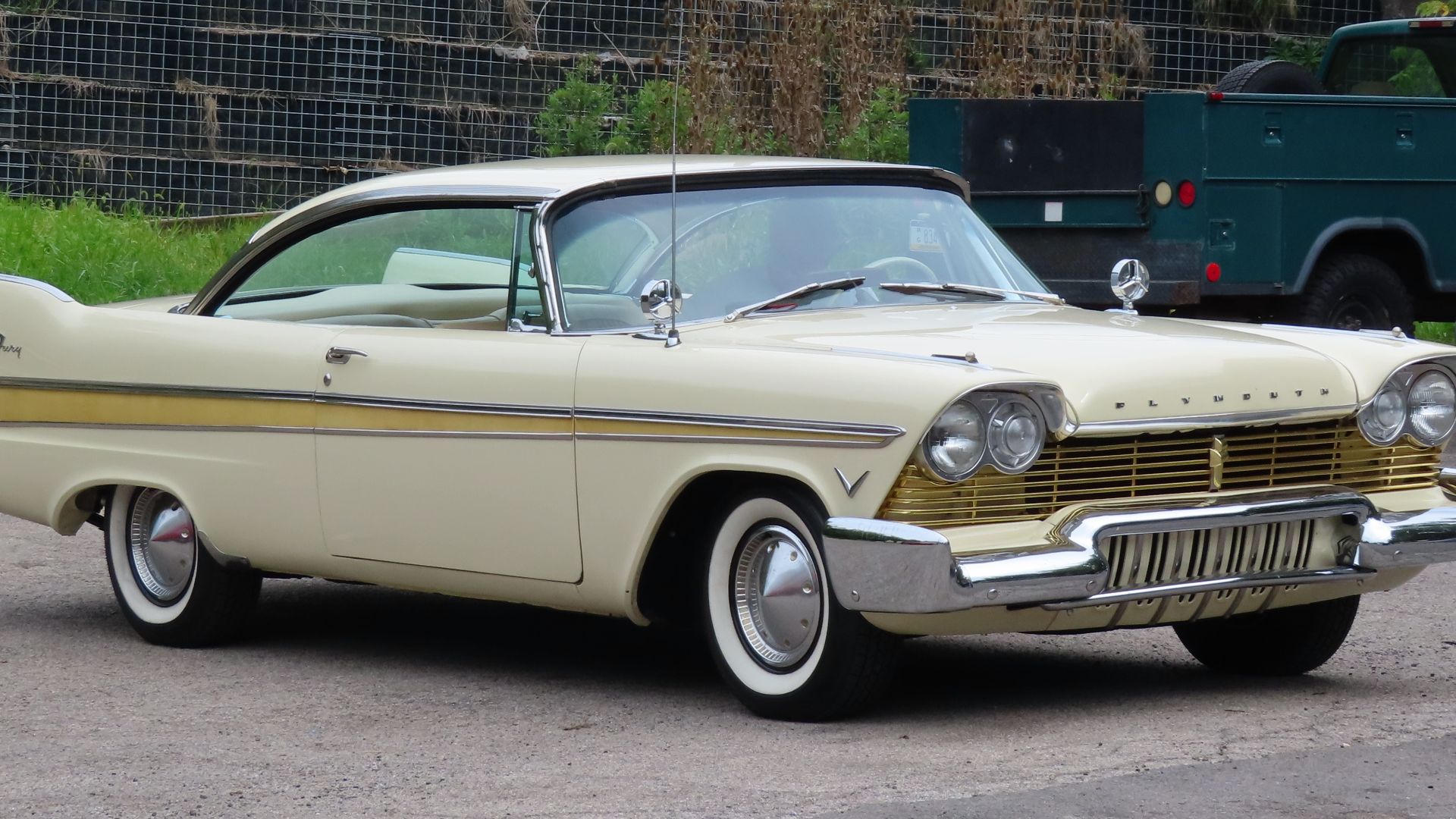 MercurySable99, Wikimedia Commons
MercurySable99, Wikimedia Commons
Chevrolet Nomad
One of Chevrolet's first "station wagon" designs, the 1955 Chevy Nomad introduced the concept of a two-door vehicle with a lengthy rear space for storage to the Chevrolet brand. Powered by a 4.3L V8, the Nomad was the perfect combination of power and utility.
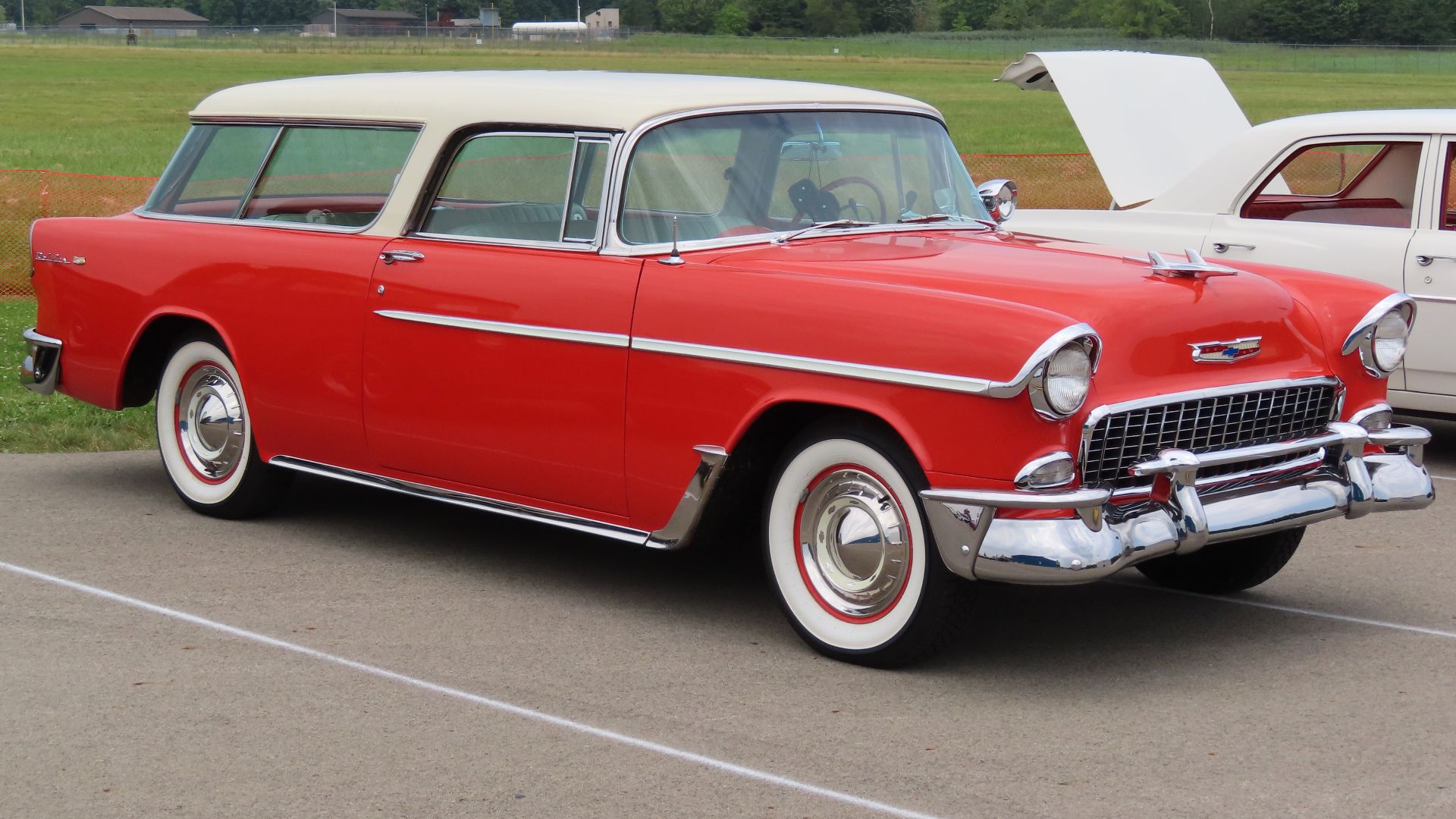 MercurySable99, Wikimedia Commons
MercurySable99, Wikimedia Commons
Pontiac Chieftain
The Pontiac Chieftain was unveiled in 1949, spurring a series of models that spanned the range of vehicle types from coupes to sedans, convertibles, and station wagons. Available with either a 3.9 or a 4.0L engine, the Chieftain's six- or eight-cylinder options weren't exactly powerful (just 93 and 108 hp respectively), and the car's popularity eventually dwindled and production ended in 1958.
Buick Skylark
The Buick Skylark was one of the most successful Buicks of the decade, selling 1,690 units—quite a feat for a car with a $5,000 price tag. The Skylark was powered by a 5.3L Fireball V8 engine and came with a 12-volt electrical system, which were both firsts in its division.
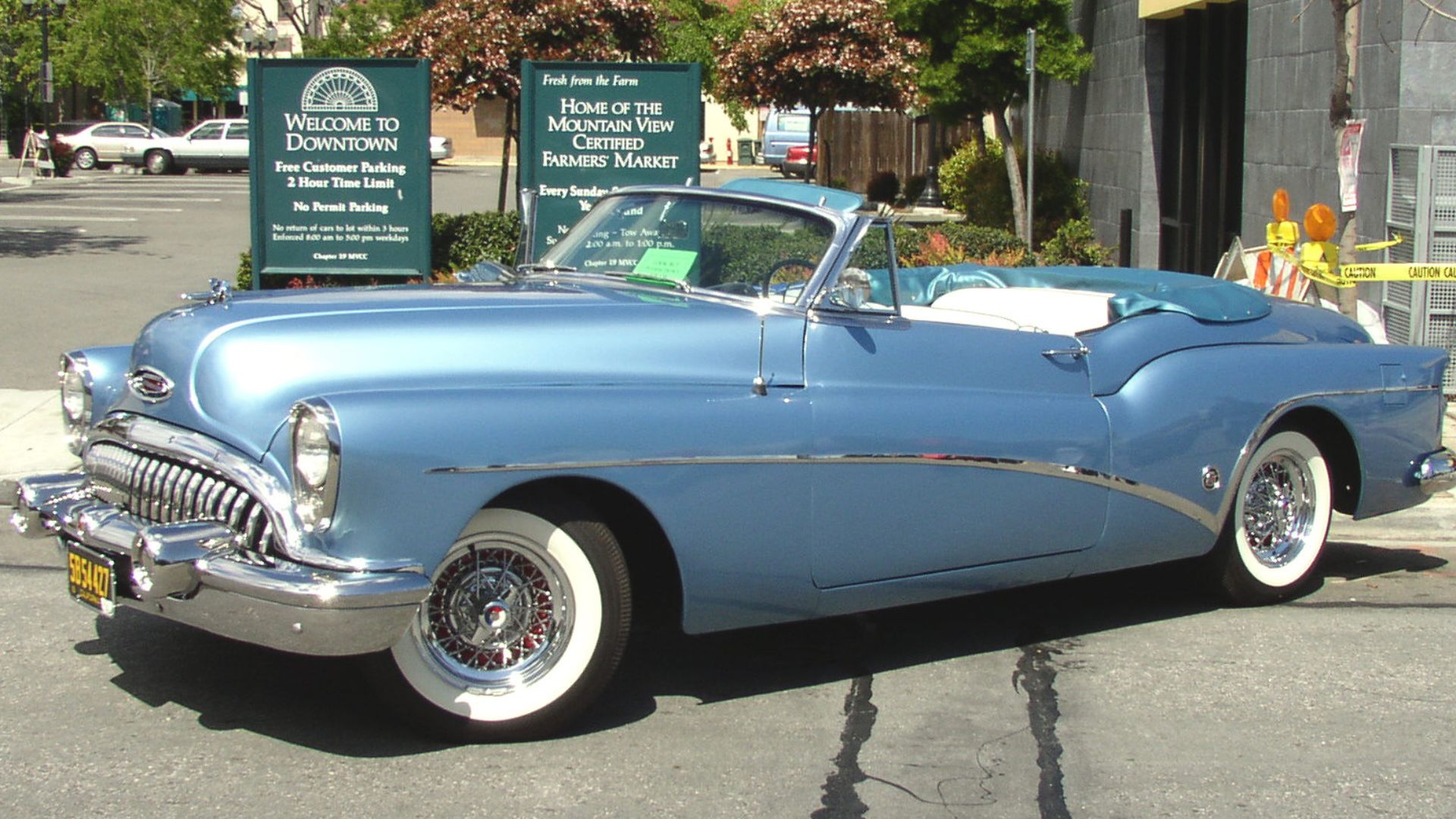 The original uploader was BuickGuy2 at English Wikipedia., Wikimedia Commons
The original uploader was BuickGuy2 at English Wikipedia., Wikimedia Commons
Cadillac Series 62
The Cadillac 62 was designed to reinvigorate the Cadillac brand after World War II, sporting tail fins that were inspired by the Lockheed P38 fighter plane. You could tell these Caddies were middle-of-the-range, though, as they could only do a modest 0-60 time of 16 seconds and had a top speed of 93 mph.
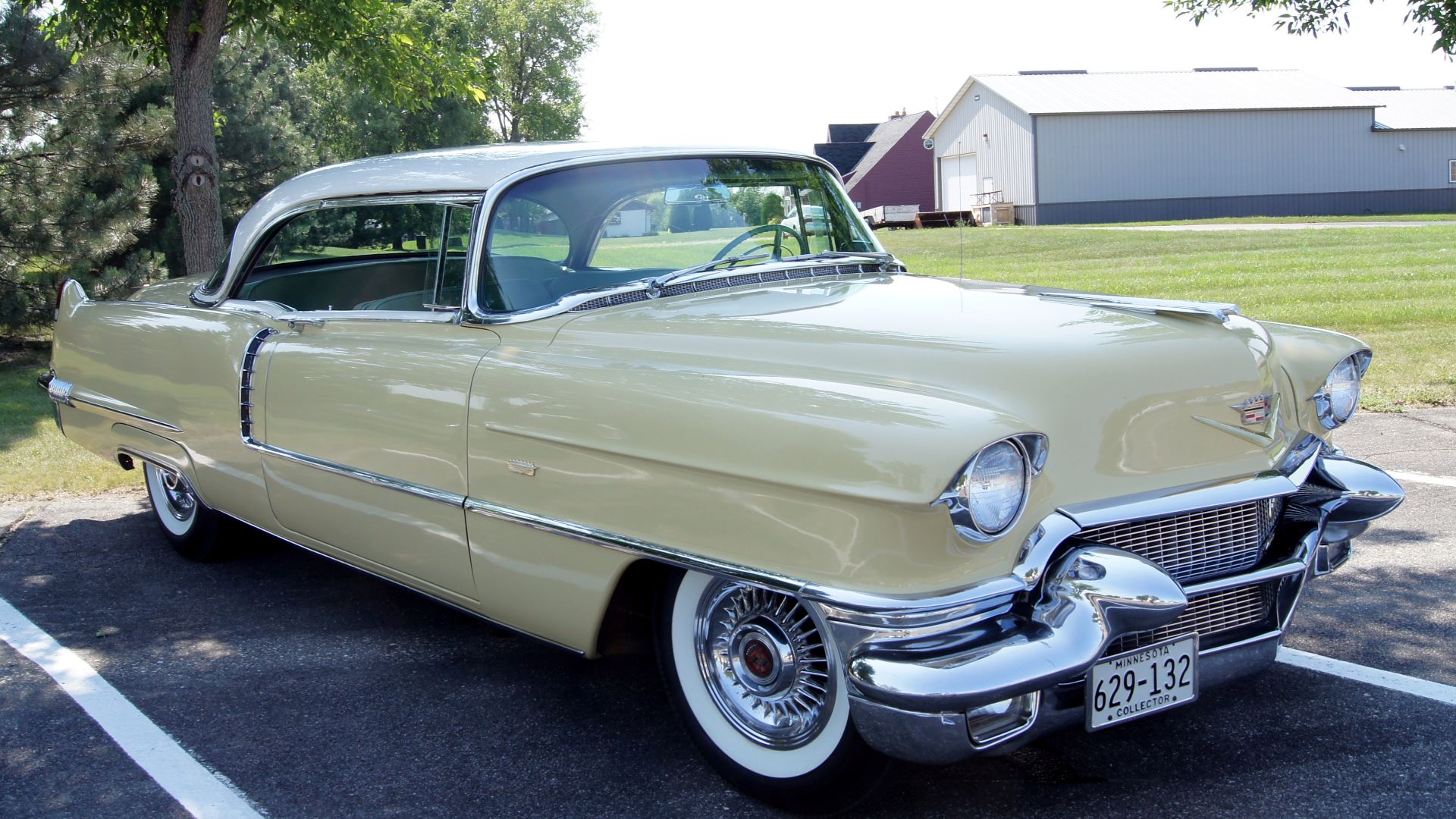 Greg Gjerdingen from Willmar, USA, Wikimedia Commons
Greg Gjerdingen from Willmar, USA, Wikimedia Commons
Chrysler 300 Letter Series
Mixing high-performance and luxury was something that Chrysler did better than almost anyone else during the 1950s and the "Letter" Series represented the first Chrysler-made cars in the aftermath of World War II. The 1955 C-300 featured a 5.4L OHV V8 engine, fitted with a racing profile camshaft and two four-barrel carburettors. It was the first American car to break 355 hp and was the most powerful car ever produced in the United States.
Studebaker Golden Hawk
The Studebaker Golden Hawk was one of few cars produced by the Studebaker Corporation in the 1950s before the company closed its doors in 1969. Produced between 1956 and 1958, the Studebaker Golden Hawk added an eggcrate grille to its styling and vertical fiberglass tail fins. Powered by a Packard 5.8L V8 engine that produced 275 hp, the Golden Hawk was popular for an excellent power-to-weight ratio.
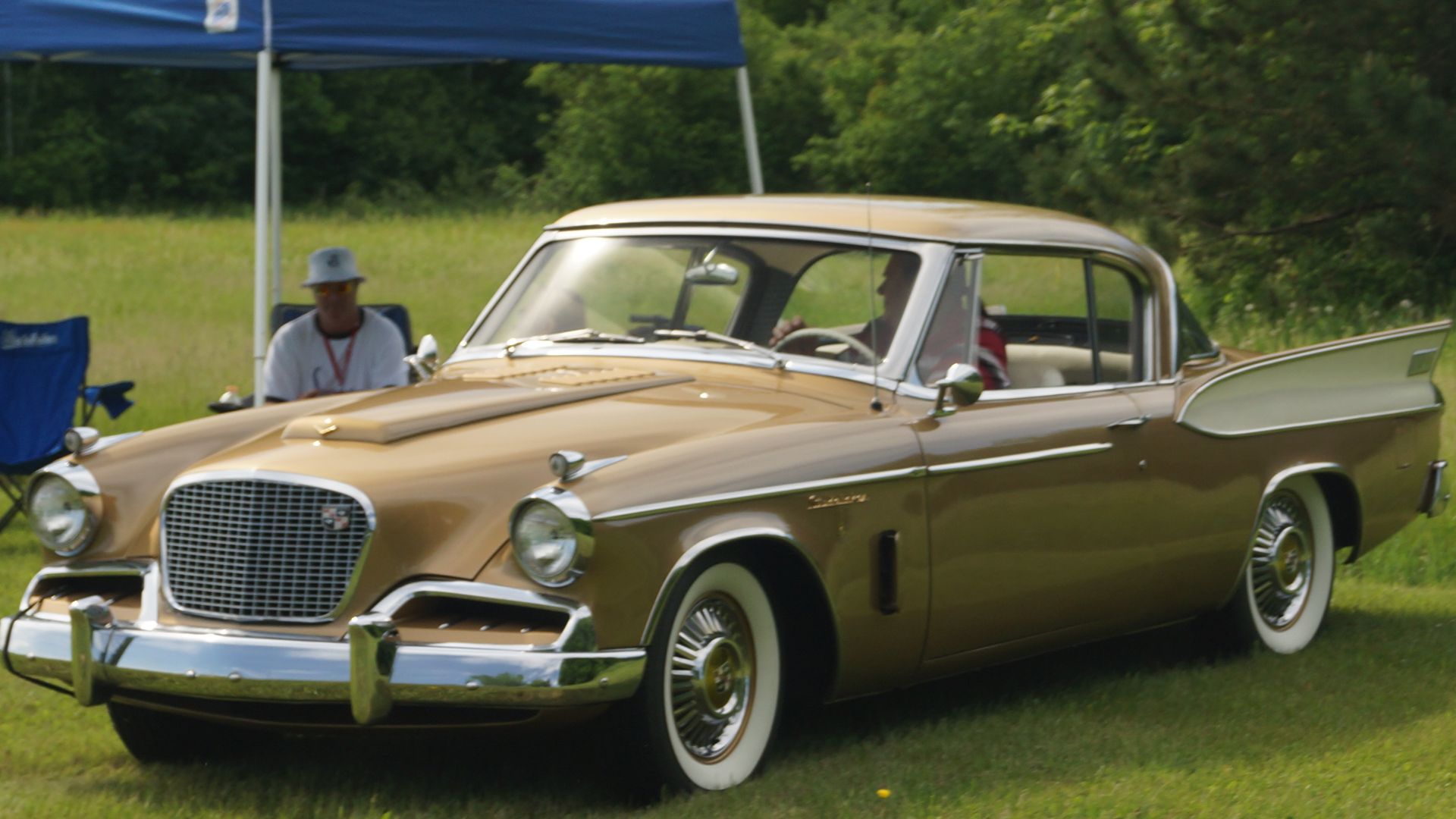 Greg Gjerdingen from Willmar, USA, Wikimedia Commons
Greg Gjerdingen from Willmar, USA, Wikimedia Commons
Chevrolet Impala
The legendary Chevrolet Impala would begin production in 1958, GM's 50th year of production. A 4.6L V8 came as standard in this legendary American car, producing 230 hp with an optional Rochester Ramjet fuel injection system. A total of almost 175,000 Impala coupes and hardtops were built, representing a staggering 15% of Chevrolet's production for 1958.
Packard Hawk
Another car from Packard was the Hawk, younger cousin of the Golden Hawk we mentioned earlier. Produced in 1958, the Hawk was the last car ever produced by Packard. The Hawk's front grille covered the entire width of the front bumper, hiding some serious power under the hood. The Hawk was fitted with a supercharged 4.7L V8 engine that produced 275 hp.
Ford Fairlane Crown Victoria Skyliner
The infamous Ford "Crown Vic" wasn't introduced to the American public until the early 1990s, but the Crown Victoria Skyliner was an older model with a beautiful transparent top, made of clear acrylic plastic. The weather-sealed top was one of the key selling points of the Skyliner. Each model made between 1954 and 1956 came with a Y-block V8 engine that produced 162 hp.
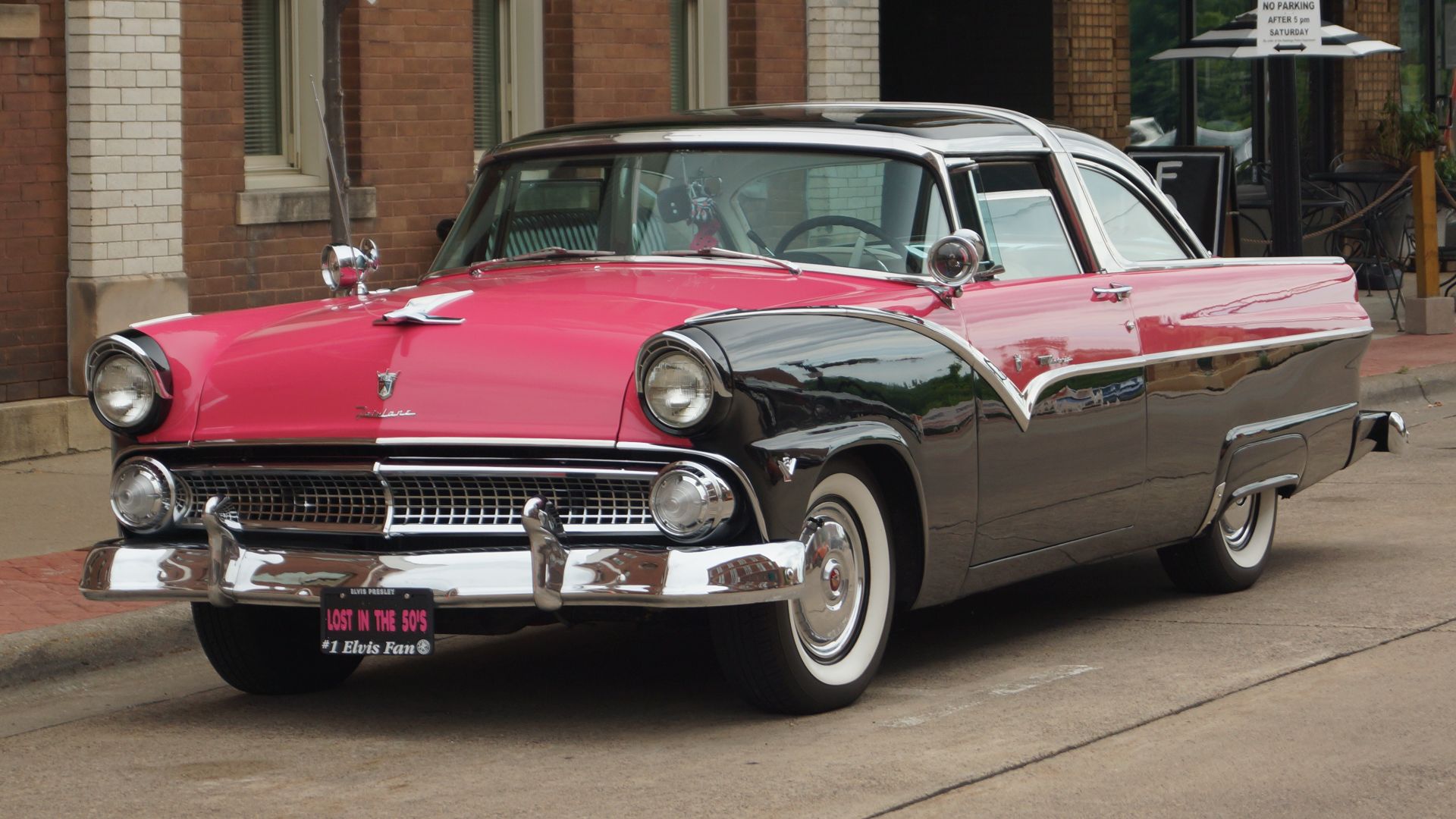 Greg Gjerdingen from Willmar, USA, Wikimedia Commons
Greg Gjerdingen from Willmar, USA, Wikimedia Commons
Oldsmobile Super 88
Launched in 1951, the "Super" variation of the Oldsmobile 88 was the longest of the Oldsmobile 88s at 120 inches, fitted with a four-barrel carburetor that produced 160 hp. Several styling changes were made to the "Super," which included new taillights, grilles, and more interior design options. It was the best in its series.
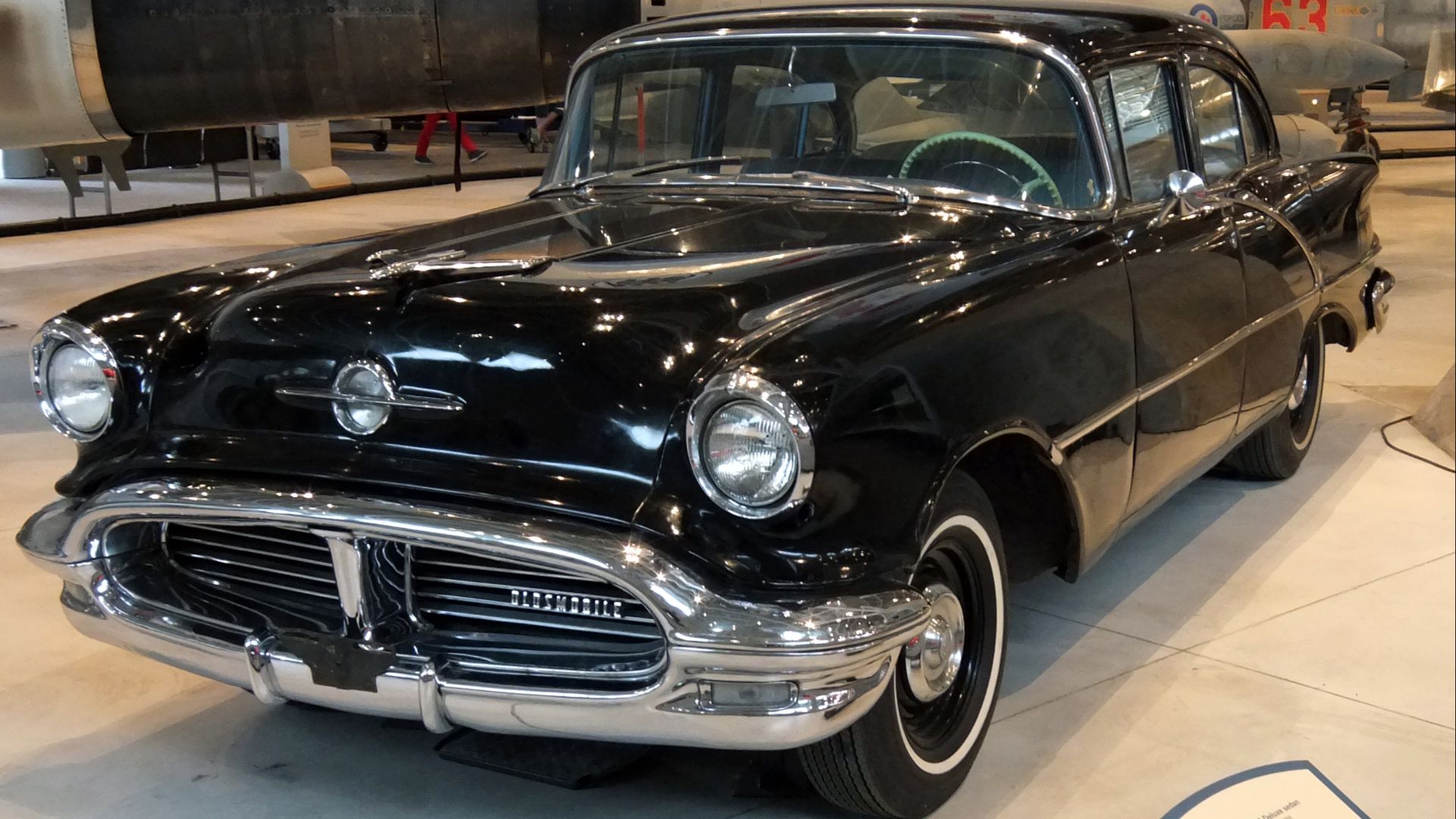 shankar s. from Dubai, united arab emirates, Wikimedia Commons
shankar s. from Dubai, united arab emirates, Wikimedia Commons
Chevrolet Corvette C1
The Corvette C1 launched the Corvette line for Chevrolet in 1953. Designed by Harley Earl, the Corvette C1 was originally a concept vehicle, but was rushed into production by Chevrolet following enthusiastic public reaction. The C1 was a two-seater, two-passenger sports car that was fitted with a 3.9L inline-six engine that produced 150 hp. This snazzy roadster launched a now-classic all-American sports car.
Lincoln Continental Mark II
The Lincoln Continental Mark II was an ultra-luxurious coupe sold by Ford from 1956 onward. It was designed to be the worldwide flagship of the Lincoln Motor Company and to compete against the likes of Rolls-Royce. Hand-built, the Continental Mark II was a hardtop coupe powered by a 6.0L V8 engine.
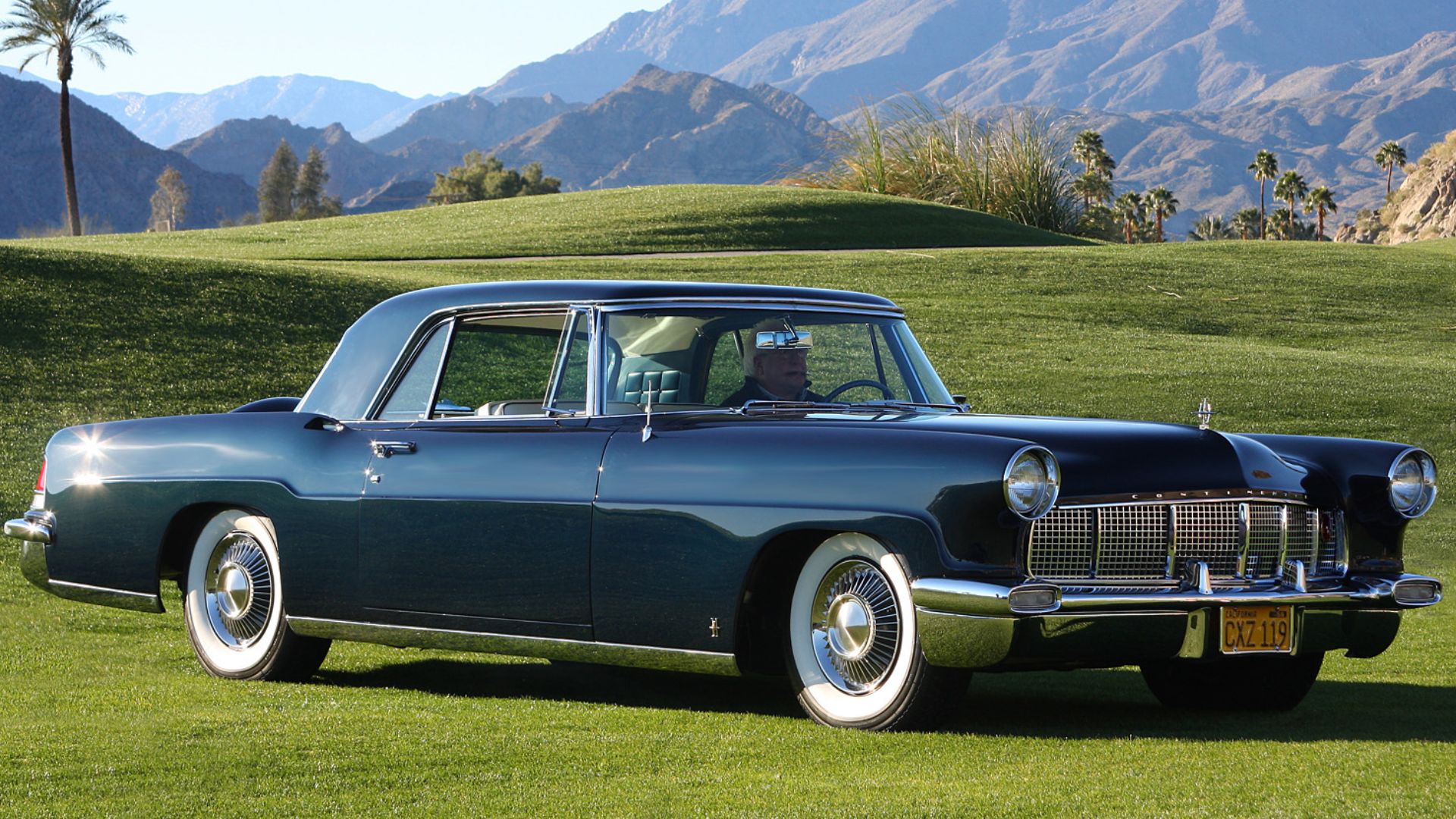 Rex Gray from Southern California, Wikimedia Commons
Rex Gray from Southern California, Wikimedia Commons
Chrysler Town & Country
The Chrysler Town & Country was introduced first in 1941 as a luxury station wagon and paved the way for the quintessential soccer mom van of the 1990s, a Chrysler of the same name. The Town & Country of the 1950s was the first post-woodie coupe released by Chrysler in 1951. Its body was all-steel and it was rear-wheel drive. Powered by the first V8 engine ever produced by Chrysler, the Town & Country sold as many as 60,000 units per year during the 50s.
Chevrolet Biscayne
The Chevrolet Biscayne was a wonderful compromise for those who wanted the opulence of a Bel Air without having to pay full price for it. The Biscayne was luxury enough for most drivers, offering a no-frills car with function over form. Powered first by an inline-six 3.9L engine, which was upgradeable to a 4.6L V8 that produced a stunning 425 hp.
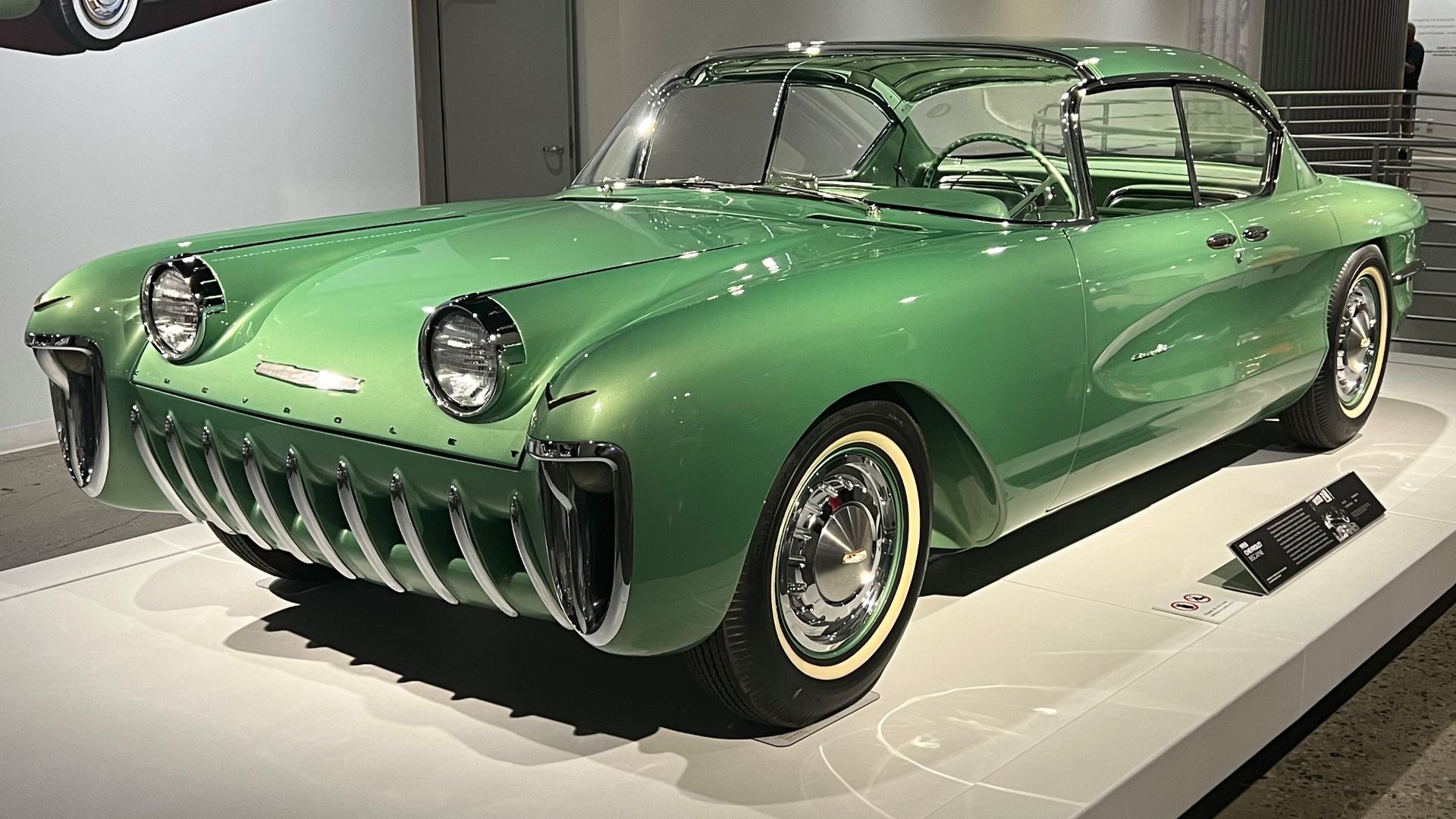 TaurusEmerald, Wikimedia Commons
TaurusEmerald, Wikimedia Commons
Dodge Coronet Texan
Designed in post-war America and released in 1949, the Coronet Texan was powered by Dodge's only built engine at the time: a 3.8L flat-head straight-six with a single carburetor that produced an impressive 103 hp. The Coronet adopted some stylish lines and offered 37 inches of headroom. It was even offered as a four-door, eight-passenger limousine.
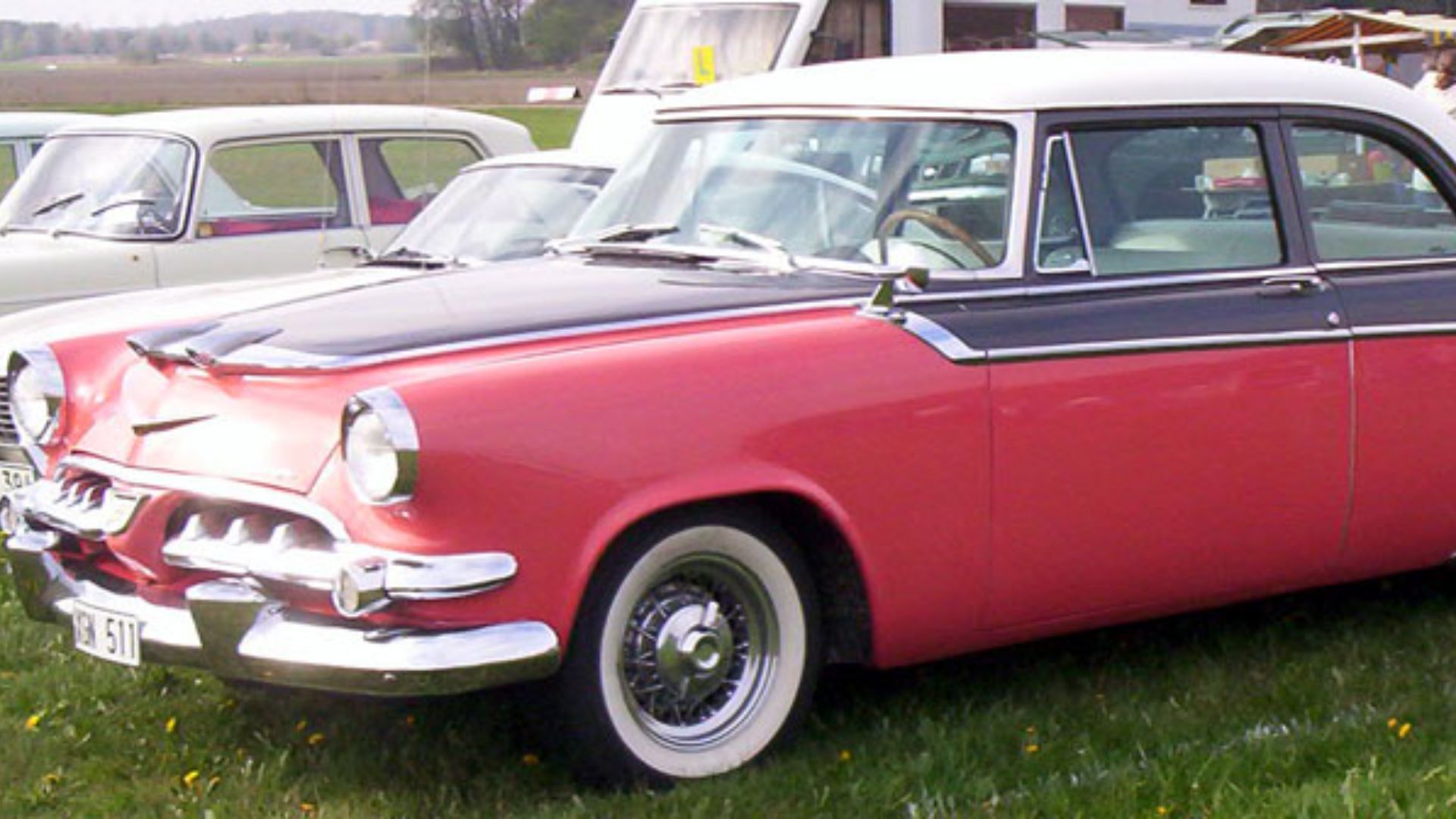 Lars-Göran Lindgren Sweden, Wikimedia Commons
Lars-Göran Lindgren Sweden, Wikimedia Commons
Hudson Italia
The Hudson Italia was another classic from the Hudson Motor Company. Released in 1954, the Hudson was built in cooperation with an Italian company, Carrozzeria Touring of Italy (hence the name). The Italia was built in a unibody design that featured aluminum panels, with v-shaped scoops over the headlights, bucket seats were made of three layers of foam rubber, with deep red Italian carpeting. Under the hood, the Italia produced 114 hp from a 3.3L inline-six engine and had a top speed of 95 mph.
Lincoln Futura
Unfortunately, the Lincoln Futura didn't make it into mass production, but it's still one of the greatest cars of the 50s, as it appeared in Batman (1966) and became synonymous with the 60s superhero. The Futura was powered by a 6.0L engine through a three-speed transmission. Featuring large outward tail fins and hooded headlight pods, it was available in a number of pearlescent paint options (achieved by pulverizing thousands of fish scales and mixing them with the paint) in one of the first pearlescent color treatments ever.
GM Firebird Line
General Motors wanted to do something crazy in 1953: develop a single-seater car powered by a gas turbine engine, a first in the US. Enter: the Firebird Mk. I. This single-seater, aircraft-looking thing had a fiberglass fuselage with a vertical tailfin. Its engine could produce 370 hp and had a jet engine exhaust. It was truly nuts, but that was the 1950s for you.
Cadillac Coupe De Ville
Although this came in at the end of the decade, the Cadillac Coupe De Ville will forever be remembered as an...interesting choice from the powerhouse luxury brand. Its dual bullet-shaped headlights were set into a jewel-like grille, with sharp tail fins and low-riding rear wheel arches. Powered by a 6.4L V8 engine, the Coupe De Ville produced an impressive 325 hp and was popular in '59, accounting for 37% of all Caddies sold.
The Staggering Collapse Of The Ford Edsel
The Ford Edsel started life as a project of noble intent. Named after Henry Ford's son, the Edsel line was introduced by Ford in 1958 with multiple vehicles available. Warning lights would show up on the car's dashboard for things like oil levels and engine overheating. Too bad they didn't show what a commercial failure the car would become.
It all started up front, with the "horse-collar grille" that drew sharp criticism from customers for its look. Despite safety features and other new interior design issues, the Edsel just didn't seem to have a definitive place in the market. The cars cost Ford $250 million to produce, without any consideration for the fact that the project might fail—which it did spectacularly, as it was introduced during a recession with more marketing than sense. This car almost bankrupted the company and was quietly discontinued in 1960.
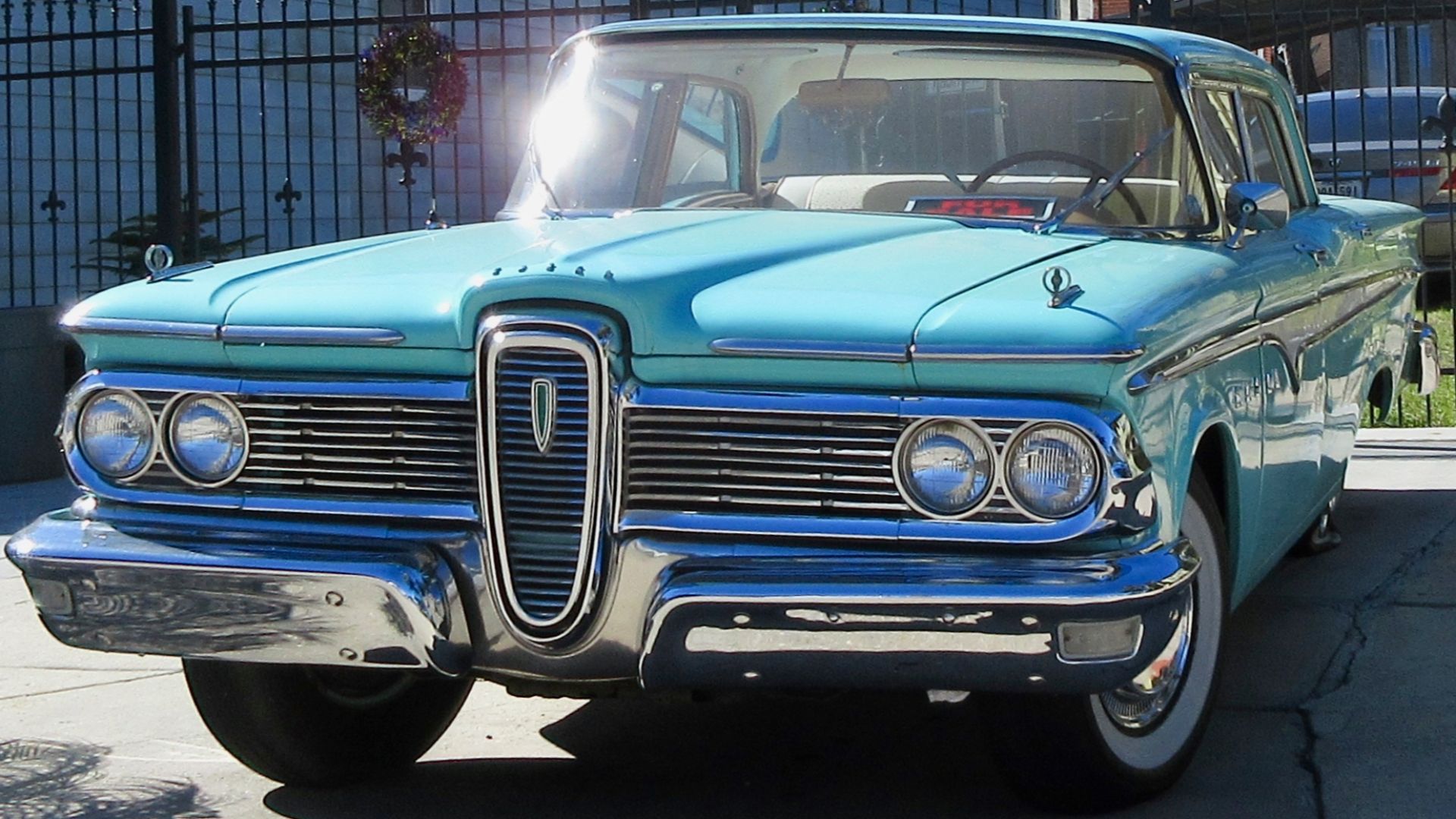 Infrogmation, Wikimedia Commons
Infrogmation, Wikimedia Commons
You May Also Like:
Prince Rainier III's Car Collection Was Regal
Cars Likely To Become Collectible


